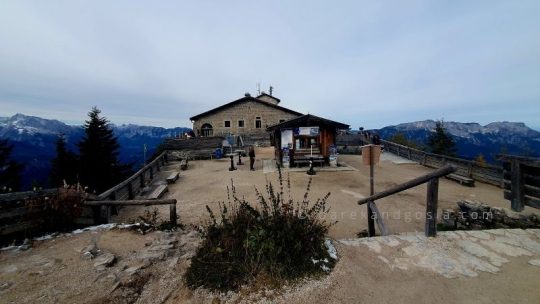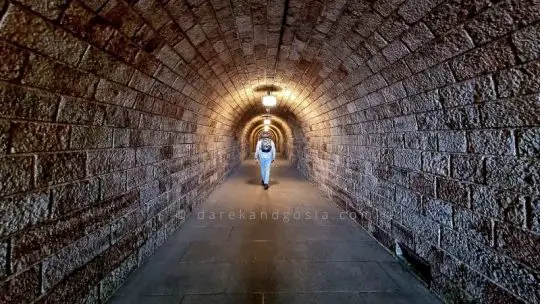What’s your favourite UNESCO World Heritage Site in Europe? Learn about the most beautiful European sites and add them to your bucket list!
Are there any interesting UNESCO sites in Europe? Ohh yes – 100s of them! The UNESCO badge means huge prestige for tourists and hundreds of thousands of tourists more. That means, let’s face it, huge money for the region or city. It is no wonder that even countries, where tourism is not the main industry, strive to make their own proposals on the famous World Heritage List.
If you are looking for ideas for the best city breaks in Europe many of the UNESCO sites will be a great option!
Who is the European record holder in this respect? Where to go to see the best UNESCO sites in Europe? Check it out below – we have covered the best European UNESCO please everybody has to visit!
If you’re itching to travel but aren’t sure where to go, then the UNESCO World Heritage List is the perfect road map to try and tick off! The sites identified on the list are all wonders worth visiting. They range from well-known sites to hidden gems. All of the places on the list give you a glimpse into the history and the wonder of the world we live in.
Unesco sites in Europe – car hire:
We have rented cars many times during our trips to see Unesco world heritage sites Europe and we always used discovercars.com
Check out our guide to the rental car companies in Europe or simply explore the options directly on discovercars.com if you need a car during a trip in Europe.
What’s on your UNESCO World Heritage Sites Europe bucket list?
Here are some of the best UNESCO sites in Europe, that every traveller should have on their bucket list.
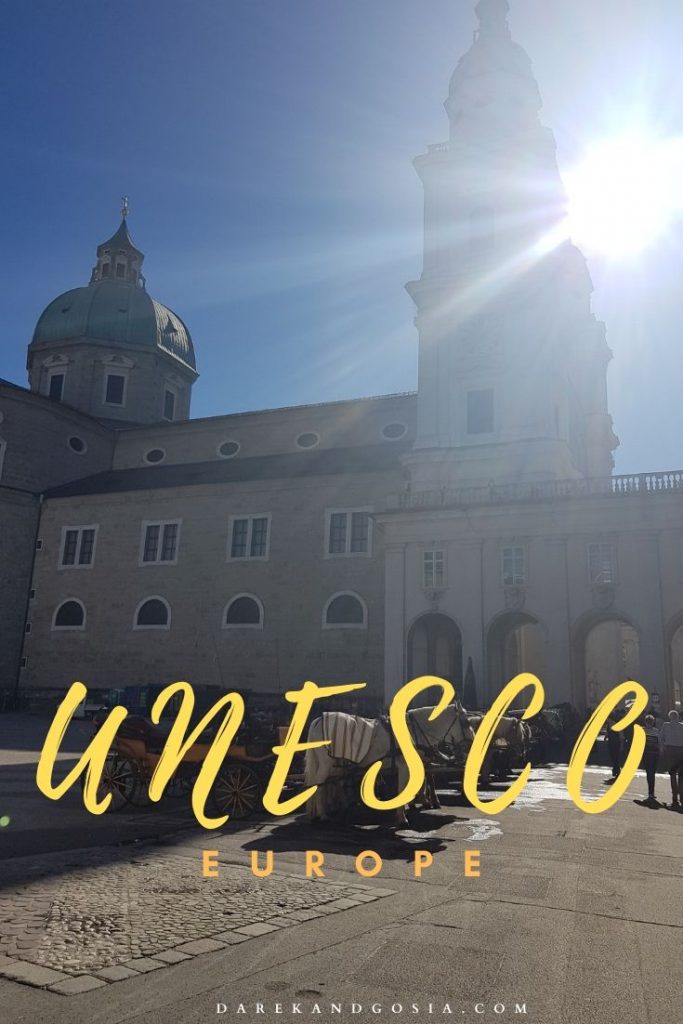
Top UNESCO World Heritage sites in Europe:
1. Hallstatt-Dachstein / Salzkammergut Cultural Landscape, Austria
This is a spot where you can easily spend a few days. The valley and surrounding mountains are some of the most tranquil and beautiful areas in the world. If you have never been to the Austrian Alps, make sure to add this stunning region to your list of things to do in Austria – the Salzkammergut area is spectacular! As amazing as it looks in pictures, it is so much better in real life.
For an unusual place to visit check out the Charnel House in Hallstatt. There are over 2000 decorated skulls. The tradition began as a way to remember the dead.
The whole region is full of beautiful landscapes and natural wonders and it’s definitely one of the most famous UNESCO sites in Europe!
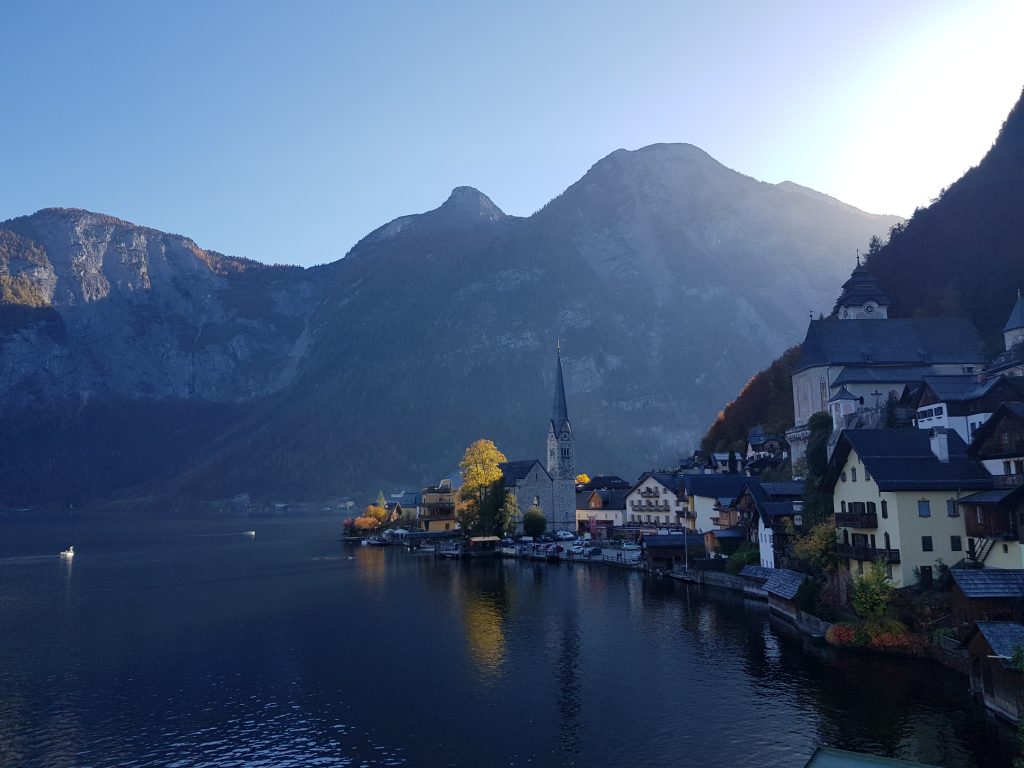
2. Seventeenth-Century Canal Ring Area of Amsterdam, Netherlands
Recommended by Samantha from samseesworld.com
No part of Amsterdam is more beautiful and prestigious than The Canal Belt of Amsterdam. The four canals that make up the canal belt are; Singel, Herengracht, Keizersgracht, and Prinsengracht. These canals form a ring around the 13th century historic centre of Amsterdam and were built in the 17th century. Since 2010 the four canals that make up the canal belt have been declared a UNESCO World Heritage Site.
In addition to the beautiful canals, the entire neighbourhood that the canal belt holds is something else. It is home to a maze of little streets full of charm and beauty. Here you will find the famous 9 streets (De 9 Straatjes) and a plethora of vintage shops, cute cafes, and delicious restaurants. This is also where you will find the famous Anne Frank House.
The best way to see this unique and beautiful UNESCO site in Amsterdam is either by boat or on foot. By boat is the better option for those looking for an authentic Dutch experience.
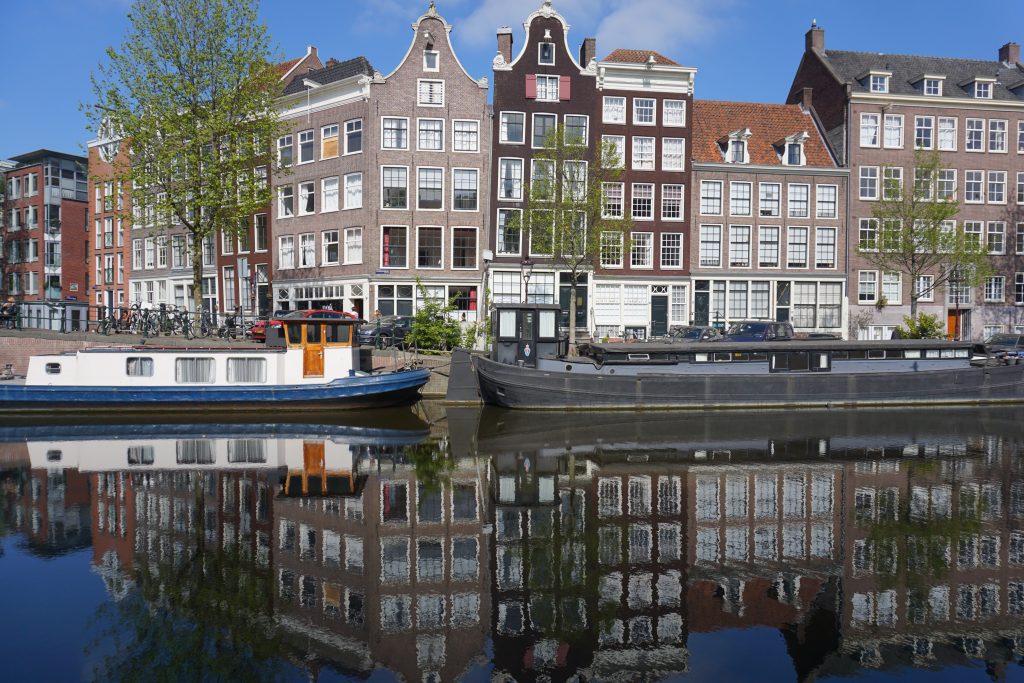
3. Historic Centre of Brugge, Belgium
For anyone who loves architecture, Brugge is the best place to visit, especially if you want to see a city that shows it’s Gothic roots with pride. It is also known for being one of the most romantic places to visit in Europe.
The town is mediaeval in origin. It is also the birthplace of the school of Flemish Primitive painting. You can also find the only sculpture of Michelangelo’s that left Italy in his lifetime.
Whether you plan to visit Bruges as a weekend getaway trip or part of Europen itinerary, make sure you spend a bit of time in the historic centre – it really is a stunning UNESCO site!
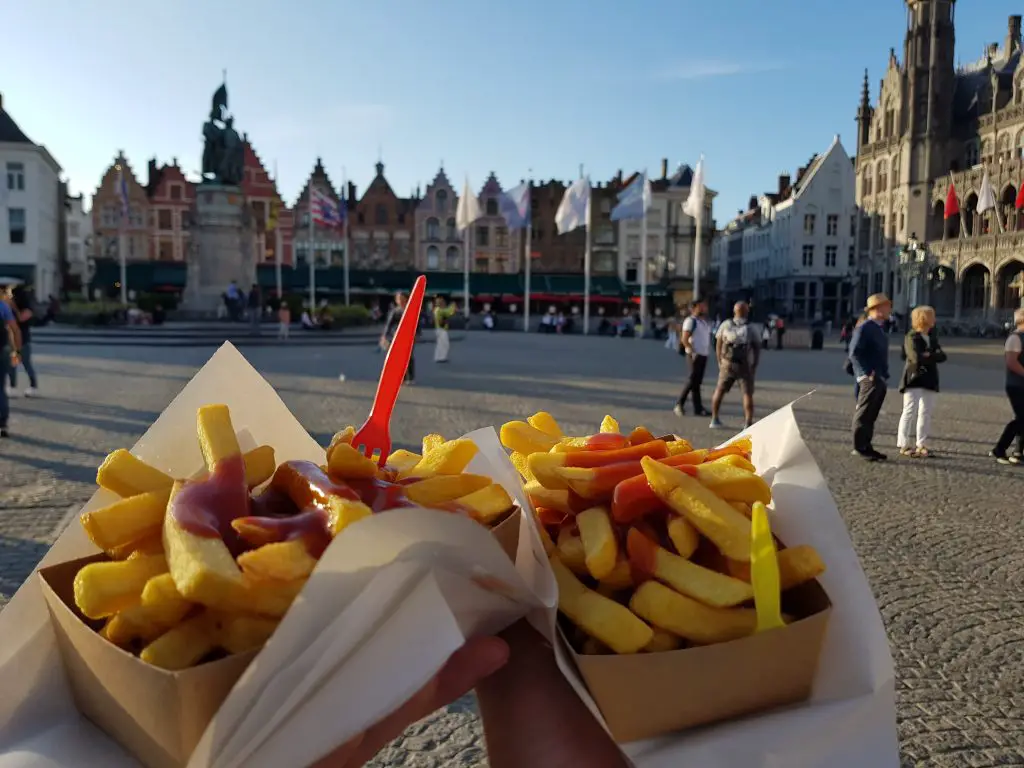
4. Delos, Greece
Recommended by Chrysoula from athensandbeyond.com
The historic island of Delos in the Cyclades is a must-see for those interested in Ancient Greece and ancient civilisations.
According to Greek mythology, the island of Delos was the birthplace of siblings Apollo (God of the Sun) and Artemis (Goddess of the Moon) which brought pilgrims to the island from far and wide.
As such, the island became the bustling centre of the Cyclades archipelago and a prosperous trading port for bankers, merchants, captains and traders. The cosmopolitan inhabitants of this island lived in richly-decorated houses with mosaic floors and intricately-frescoed walls and the myriad ruins that can be explored today clearly show the sheer scale of the settlement.
Visitors can discover statues, monuments, columns and mosaics on a day trip from the nearby island of Mykonos, with ferries departing most days throughout the summer months. As the whole island is a dedicated archaeological site, staying overnight is not permitted. In order to get the most out of your day trip to Delos, taking a guided tour is advised, and opting for the first ferry there and the last ferry back will give you maximum time to explore.
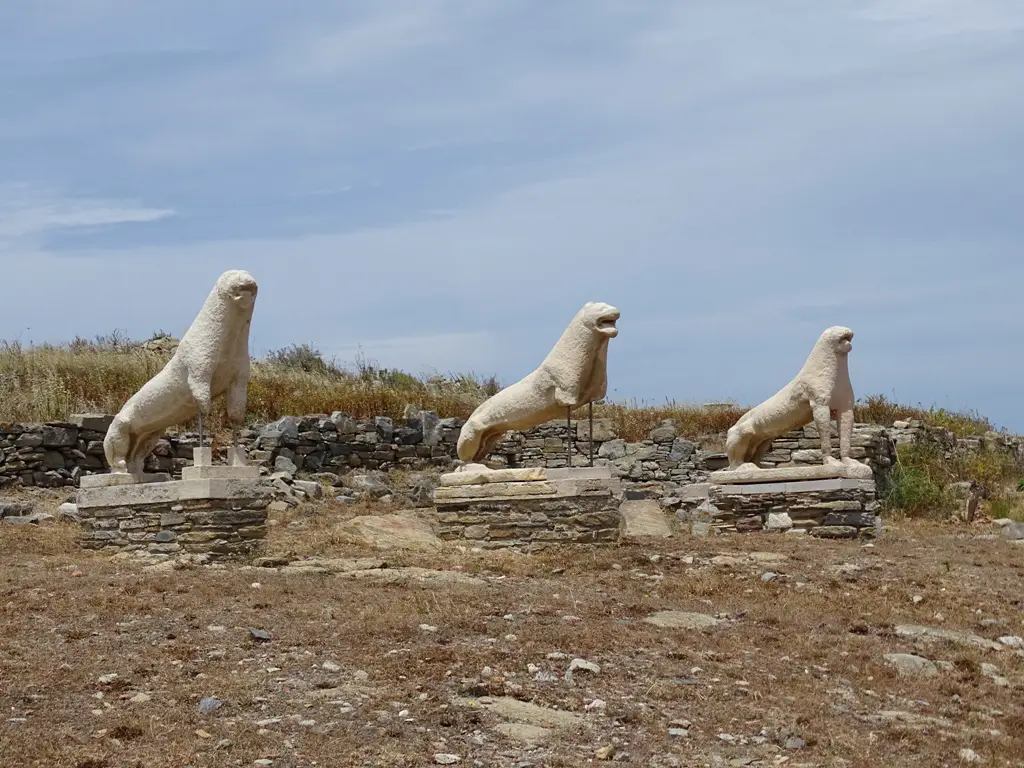
5. Venice And Its Lagoon, Italy
It’s hard to believe that such a beautiful city was built out of necessity. In the 6th century, the surrounding areas were terrorised by Barbarian invaders. The lagoon provided security and shelter. However, it didn’t take long for Venice to become one of the most influential cities in Europe.
The canals that thread through the city may eventually wash the buildings away. The town’s people are fiercely protective of their city so treat the place with respect when you visit.
Venice is definitely one of the best places to visit in Italy. With its amazing bridges, gondola rides and the amazing St. Mark’s Square – it is one of the most romantic cities in Europe and a famous UNESCO World Heritage Site!
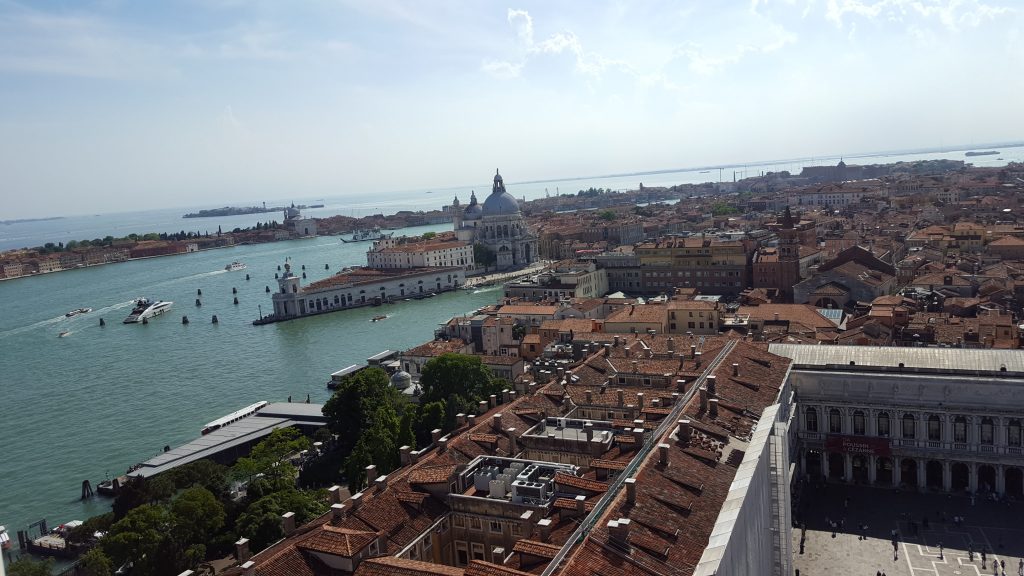
6. Monastery of Alcobaça, Portugal
Recommended by Cath from passportsandadventures.com
One of the most stunning UNESCO places in Europe to visit is the Monastery at Alcobaça in Central Portugal. Located in the town with which it shares its name, this Roman Catholic monastic site, 120km north of Lisbon forms a UNESCO Triangle with the Monastery of Batalha and the Convent of Christ at Tomar.
Dating from the 12th century and established by the first King of Portugal, this monastery displays stunning Gothic architecture and the main nave of the church is free to enter. However, the inner cloisters are even more beautiful, so it is worth paying the small nominal fee to go behind-the-scenes.
Visit the beautiful cloister courtyard, see the Gothic dormitory of monks, the kitchens with its huge oven chimney and enjoy the beauty and intricacy of the architecture. It is not hard to see why this monastery was given UNESCO status. And if you are travelling as a family, both this monastery and the one at Batalha are suitable to visit if exploring Central Portugal with kids.

7. The Dolomites, Italy
The Dolomites are one of the most stunning mountain ranges in the world. In the area, there are 18 peaks which reach over 3000m. There are 41 glaciers, many of which are shrinking, so you should visit while you can.
This UNESCO World Heritage site is famous for its skiing and an abundance of breathtaking vistas. It is also one of the best places to hike in Europe!
The Dolomites are very high on the Italian bucket list for all tourists looking for amazing road trips – without a doubt, the Dolomites are one of the most famous UNESCO sites in Europe.
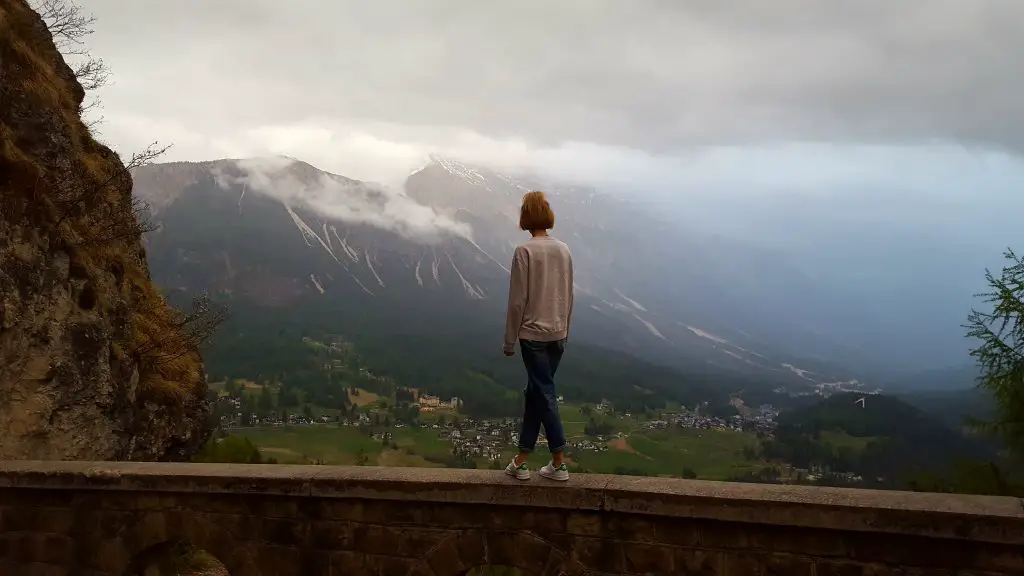
8. Historic Centre of Český Krumlov, Czech Republic
Recommended by Marika from clumsygirltravels.com
Cesky Krumlov is a fairytale town located in the South Bohemia region of the Czech Republic. It’s a popular place to visit for a few days or a quiet day trip from Prague. A 13th-century castle looms over the entire town and is an excellent spot for pictures and has a belltower with an incredible panoramic view of the old town and river. The colourful architecture and the cobblestoned streets of Cesky Krumlov are like being stuck in a time warp. Unfortunately, no knight in shining armour was spotted galloping through, but don’t lose hope!
For such a small town, there is surprisingly a lot to do. There are a ton of museums like the marionette museum (a bit creepy if I am honest), a museum of torture, the wax museum, and a history museum. You can also take a tour of the castle. If you are hungry, Papa’s Living Restaurant has delicious homemade Italian food, and for dessert, BonBon Chocolate Shop has quality made and chocolate that will satisfy any sweet tooth.
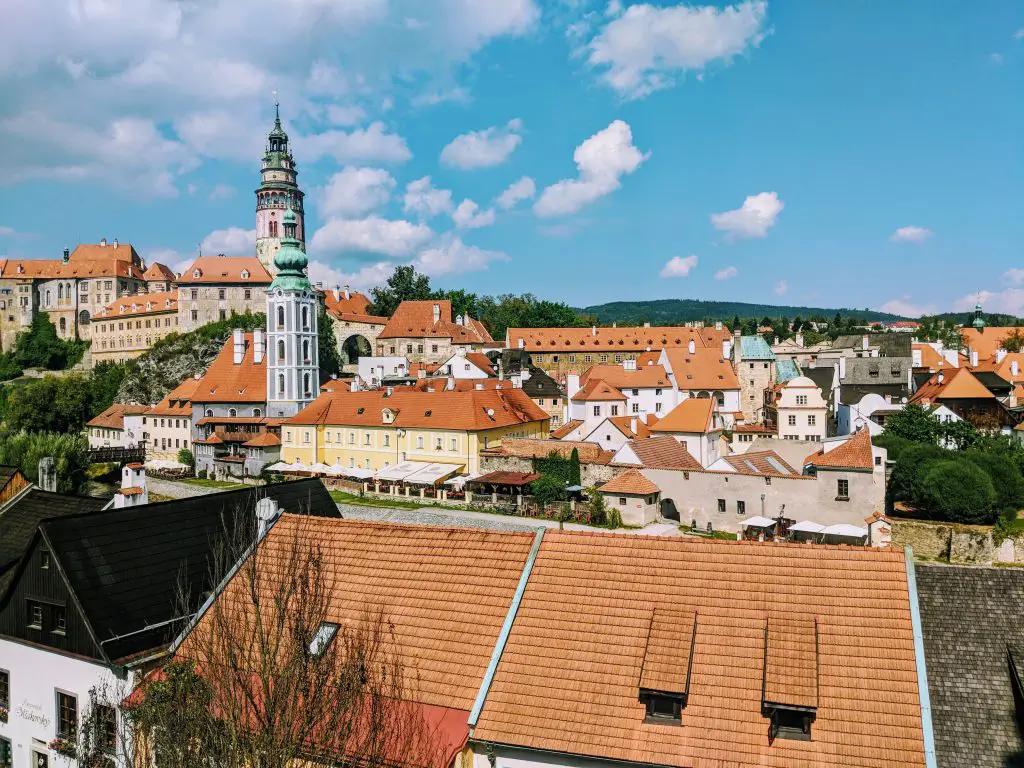
9. City of Valletta, Malta
The capital city of Malta is possible one of the most historically dense locations in the world. There are 320 monuments inside the city – so many on such small Europen island!
Over the years the city has been ruled by the Phoenicians, Ancient Greeks, Carthaginians, Romans, Byzantines, Arabs as well as the Order of the Knights of St John. This city is a treasure trove for anyone with interest in ancient history as each of the many rulers has left a mark on the city.
Known as one of the top winter sun destinations in Europe, Malta has much to offer. From beautiful landscapes, interesting places like Popeye Village to romantic evenings in Valletta city. This stunning Unesco sites in Europe is perfect for a family holiday or just a weekend break.
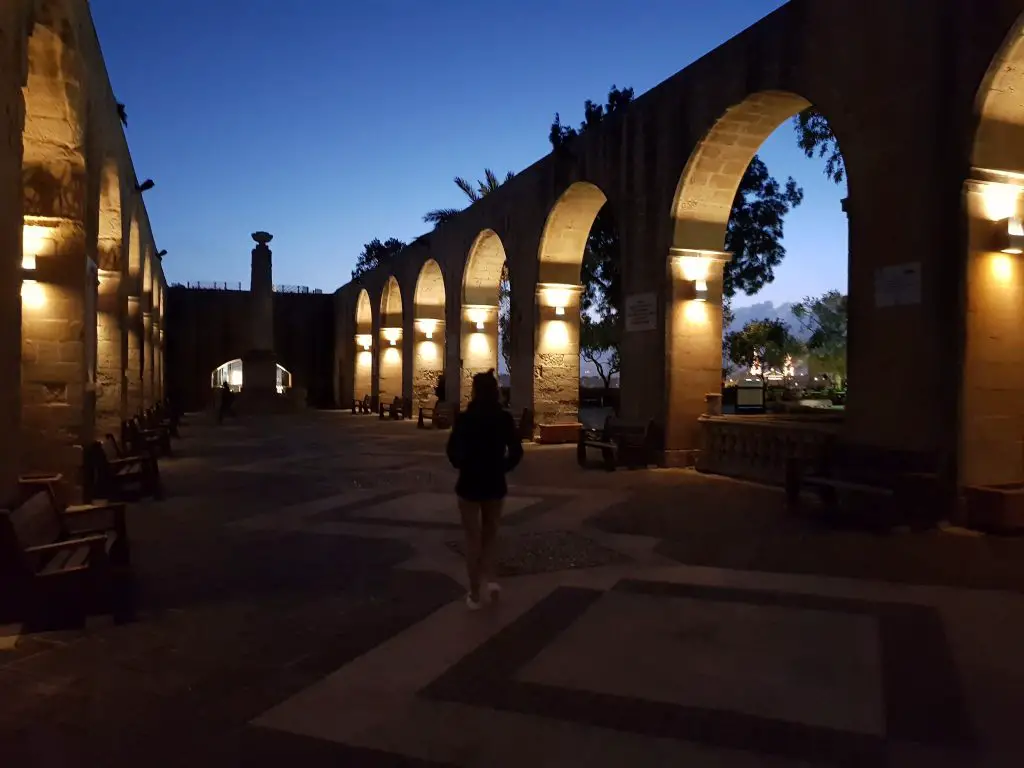
10. Upper Middle Rhine Valley, Germany
Recommended by James from travelcollecting.com
The Upper Middle Rhine Valley is a highlight of any trip to Germany. If you have seen a tourist poster or postcard of a gorgeous castle on a hill, with a river below, chances are it was taken in the Rhine Valley.
The Rhine River runs through a steep-sided gorge for 40 miles/ 65 kilometres between Koblenz and Rudesheim. On the way, it passes more than forty castles, gorgeous villages, vineyards, woods and the famous Lorelei Rock of German folklore.
The easiest way to see the valley is on a river cruise down the Rhine, stopping off along the way. The castles sit near atop the hills, where they have vantage points over the river below. Most have been restored and several can be visited. The villages are below on the banks of the river and feature half-timbered buildings, steepled churches, narrow lanes and river views.
The vineyards form striped patterns on the steep sides of the valley. The valley is incredibly beautiful and you could easily spend days exploring the castles, villages and vineyards.
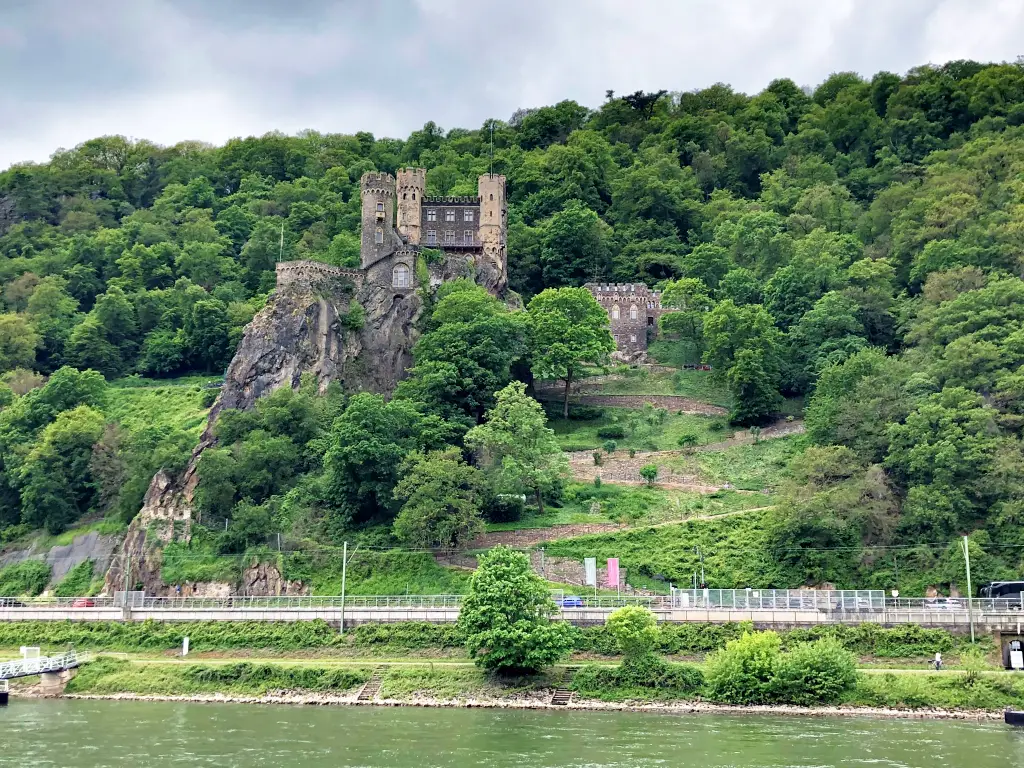
11. Historic Centre of Kraków, Poland
This 13th-century town is at its heart a merchant’s town. It is home to the largest market square in Europe. You can see the remnants of the 14th-century fortifications that provided protection.
The Gothic cathedral at the centre of the city is the burial site of the Kings of Poland. The whole place is filled with history from the ancient homes and palaces to the churches and synagogues.
Krakow is not only one of the most romantic places in Europe but also one of the most beautiful cities and UNESCO sites in Europe!
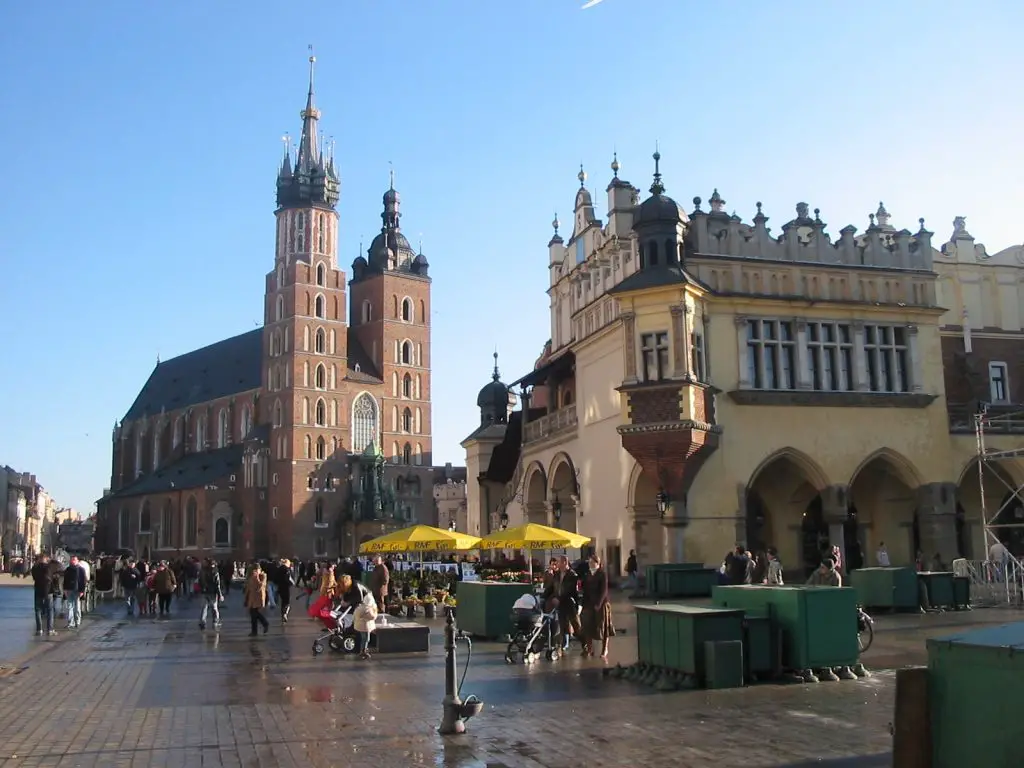
12. Lavaux, Vineyard Terraces, Switzerland
Recommended by Nisha from nerdyfootsteps.com
Lavaux vineyards in Switzerland are a hidden gem. While most of the tourists are attracted by Mount Titlis and Lucerne, locals enjoy their stroll in the UNESCO heritage Terrasses de Lavaux.
While the evidence suggests that vines were grown on these steep vineyards in Roman times, the present terraces can be traced back to the 11th century. As the area is highly protected and the gradient of the sloped is very steep, grapes need to be harvested by hand rather than a machine.
To get the best experience of these vineyards, I highly recommend hiking the classical Terrasses de Lavaux trail which starts from St Saphorin and rolls up all the way to Lutry. Not only this trail provides some of the best views of lake geneva, alps, and the vineyards, it passes through some spectacular old swiss villages. You can even stop by any of the wine cellars for wine tasting.
Located between Lausanne and Geneva, these vineyards are easily accessible by train.
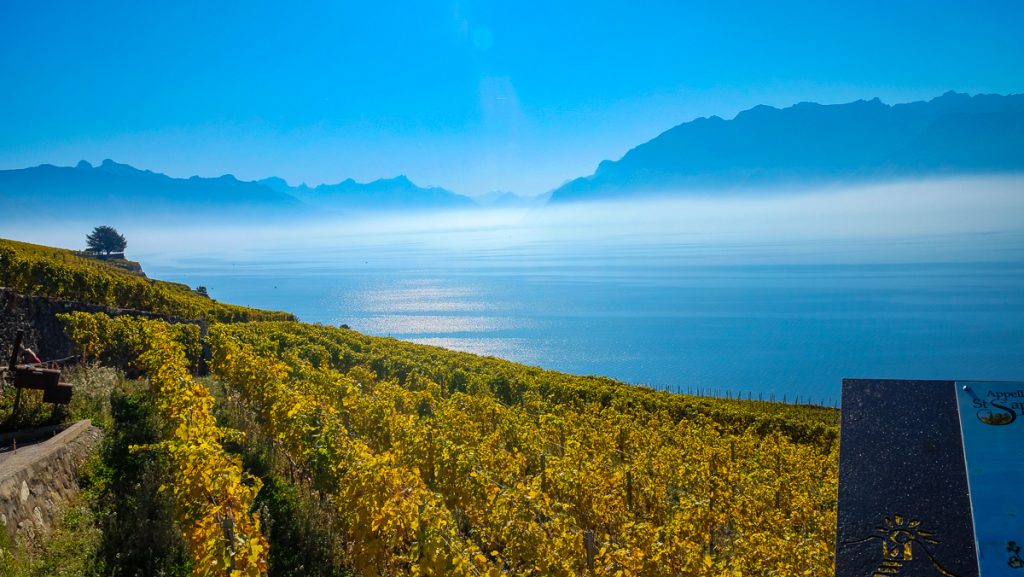
13. Archaeological Areas of Pompei, Herculaneum and Torre Annunziata
Even though Pompei is the most famous of the three, all these cities were destroyed in the eruption of Mount Vesuvius. The combined area is the largest archaeological site in the world. The discovery of the ruins of these cities gave historians an unprecedented look into the life of ancient Romans.
As you wander the buildings, you can still see the graffiti that was left by the Romans. You may also be surprised to find out just how many of the buildings were actually brothels! Pompeii from its earliest days, as an ancient Greek city, had quite a rowdy reputation.
Given its extraordinary history and, Pompei deserves a place in the top most beautiful UNESCO sites in Europe. It is only one of the top must-see places in Italy!
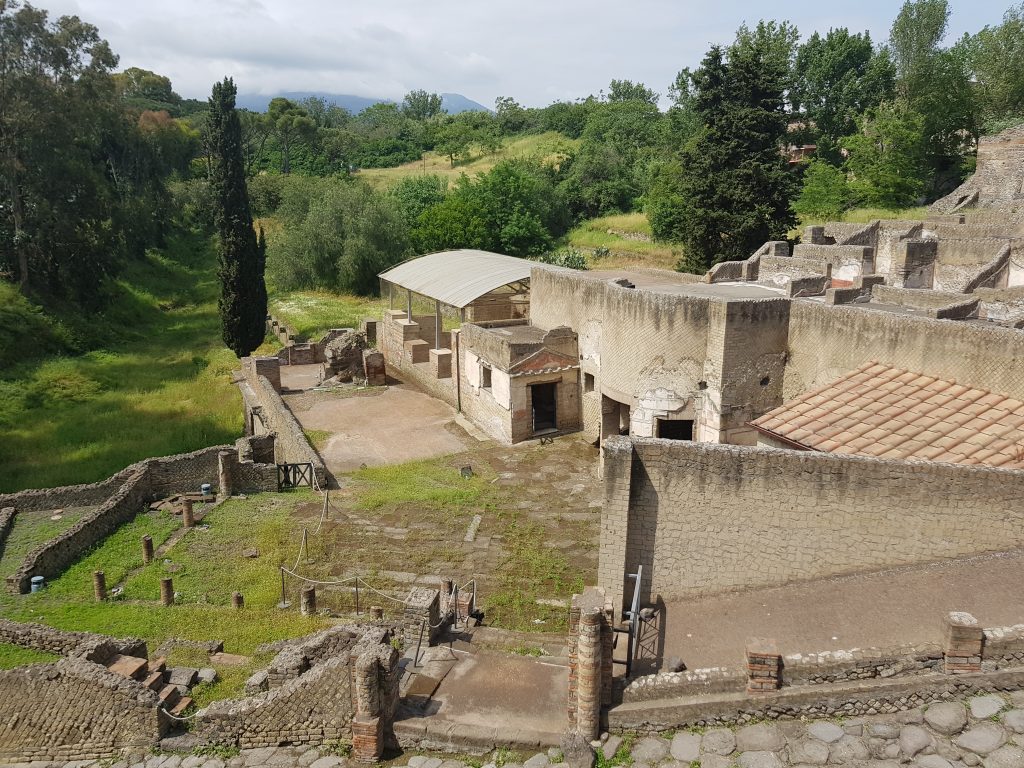
14. Laurissilva of Madeira, Portugal
There are a few places where the natural world still holds sway. That’s why a visit to Laurissilva is such a magical experience. Lausissilva gets its name from the Latin Laurus for laurel and Silva for the forest.
That is precisely what you will find there, a laurel forest. Mind you; this is a laurel forest that has been standing, in this spot, since before man even walked on the planet. It’s no wonder why it’s considered one of the must-see UNESCO Sites in Europe and one of the most stunning places in Portugal.
As you might expect of a place that has been growing naturally for 15 million years, the forest is beautiful. Only 20% of the UNESCO sites are natural ones, so there are far fewer to choose from. Many are also difficult to visit places. So if you can, you shouldn’t miss the chance to visit this forest.
Madeira s also one of the most beautiful European islands that deserve a visit.

15. Acropolis in Athens, Greece
Recommended by Chantae from chantae.com
The Acropolis acts as an icon of our shared human history, perched atop the sprawling city of Athens. Like shaping mankind out of marble, talented architects formed the structures that comprise this ancient city. An intricate gate of columns leads to an open platform where the Parthenon and the Temple of Athena Nike stand as if over 3,000 years of war, regime change, and natural disasters have hardly taken place at all.
If you visit the Acropolis at sunrise or sunset, you might notice that the structures themselves seem to take on a new form. The angles of the columns and the way that the shadows dance beneath them create a strong illusion of change. It’s a prime place to sit and reflect on how one site in Athens had such an everlasting and ever-changing influence on today’s concepts of democracy, theatre, and intellectual expression.
The Acropolis earned UNESCO World Heritage recognition in 1987 and is well worth a visit if you venture to Athens.
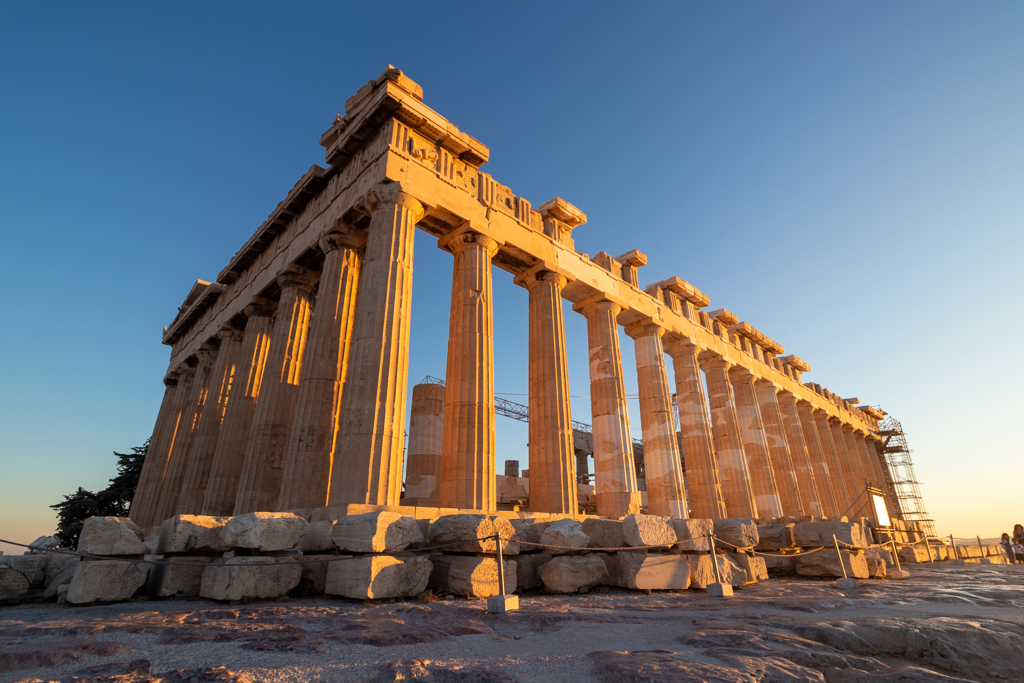
16. Blenheim Palace, England
It is located near Woodstock, a pretty village in Cotswold, and it’s one of the top spots to visit in Costwolds. Blenheim Palace is one of the most popular tourist destination in England and for good reason.
The palace has over 200 rooms, 1,000 windows, and 10,000 books in its library. It’s a real slice of English History. The palace is the only building in the country that is allowed to carry the name ‘palace’ without being a royal residence. The crown still owns the land, so the Queen receives rent. All she asks for is a Blenheim flag each year. Blenheim Palace really is one of the most beautiful UNESCO sites in England and Europe.
If you can, you should visit in Summer. They hold a jousting tournament on the grounds. It’s one of the best day trips from London by car!
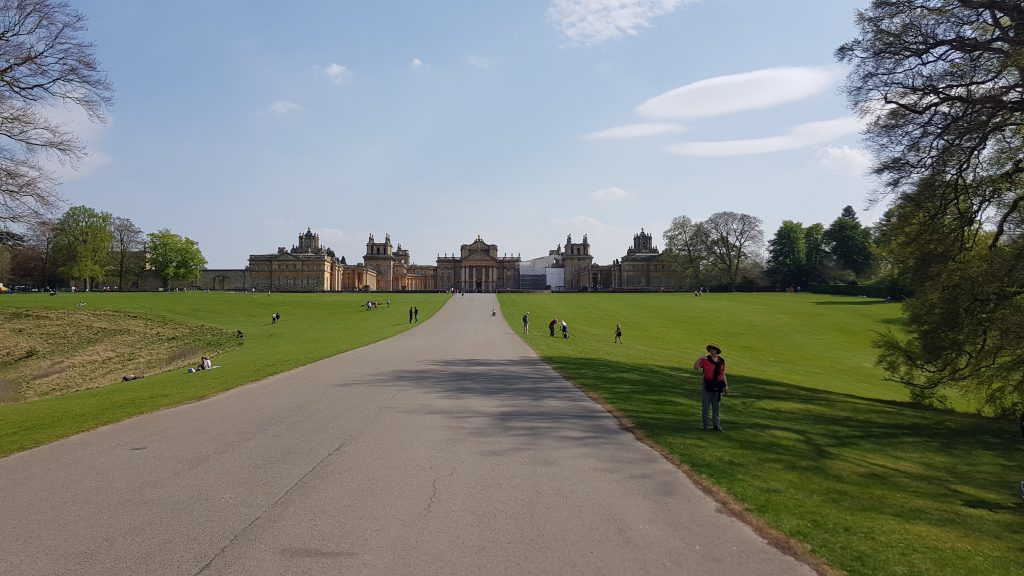
17. Kremlin and Red Square, Moscow
Recommended by Lindsey from have-clothes-will-travel.com
The Kremlin is a fortified complex in the heart of Moscow. Inside there are five palaces, four cathedrals, and an enclosing wall. The Grand Kremlin Palace is also located inside, which is the official residence of Russia’s president, like The White House. (However, he doesn’t actually live there.) The Kremlin was built at the end of the 15th century, although some of the cathedrals inside were built as far back as 1156.
Visitors can now go inside the Kremlin. There are 2 separate tickets required to enter. (Tickets can be purchased online via the Kremlin’s website.) One ticket will allow you access to the Kremlin’s cathedrals, the Tsar Bell, Tsar Canon, etc. The other will get you inside the Kremlin’s Armoury.
The Kremlin Armoury is one of the oldest museums in Moscow. This museum is filled with jewels and ornate gifts and an incredible Faberge egg collection. There are even dresses displayed which Catherine the Great wore and the carriages she had used. You can also see thrones used by tsars throughout the centuries. It’s a must-see for any trip to Russia.
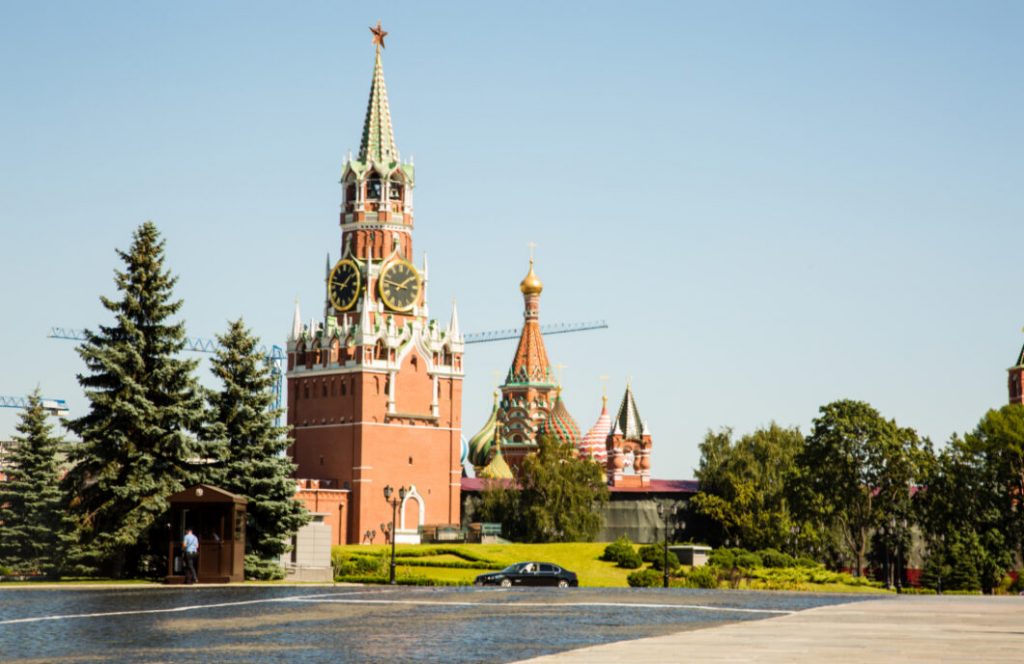
18. City of Bath, England
The city of Bath is an ancient Roman town. They called it Aquae Sulis, whereas the locals decided to instead name it for the baths it housed. It was built in the caldera of an extinct volcano which is responsible for the hot springs that made the city a famous Georgian spa town. As such a long-lived town, it’s no surprise that it is chock full of notable places.
When exploring the city, you should take the time to examine the buildings and the skyline. Bath Abbey is a sight to behold from below. After you’ve watched the abbey tower from the city, you should climb to the top and enjoy the view over the ancient streets of the town.
Bath is not only one of the most beautiful places in England but also a must-see UNESCO site in Europe – a perfect place to visit for a day trip from London. or a weekend trip in the UK.
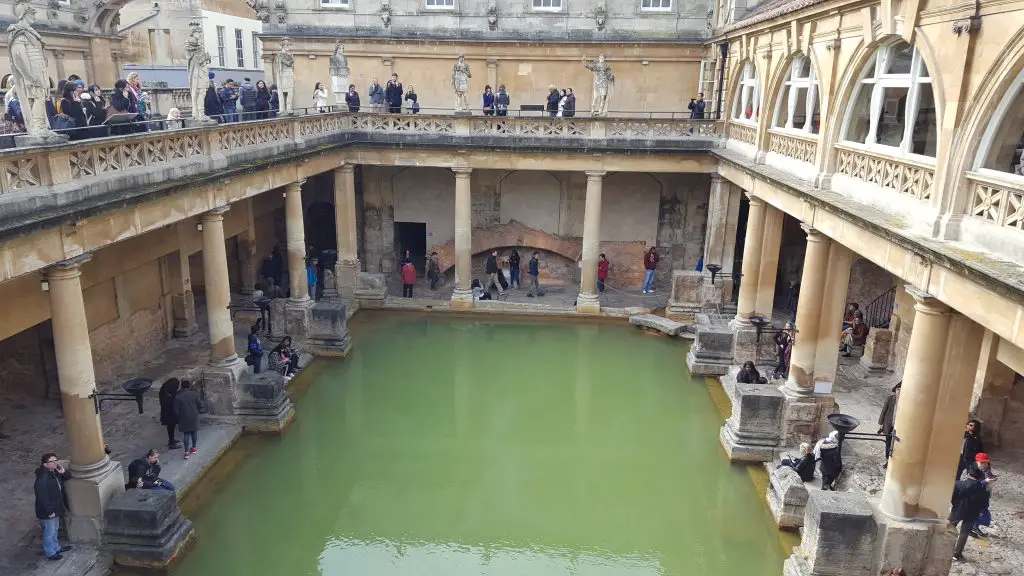
19. Historic Centre of Porto, Portugal
Recommended by Wendy from thenomadicvegan.com
The entire historic centre of Porto is inscribed as a UNESCO World Heritage Site, along with the Monastery of Serra do Pilar, which is technically in a different city on the other side of the Douro River, and the Luiz I Bridge that spans the river and links them together. This double-decker bridge is the best vantage point from which to get a panoramic view of Porto, with its red-tiled rooftops and its façades covered in colourful azulejos.
While there are a number of museums to visit in Porto, what’s even more enjoyable is just wandering around the city to soak up the atmosphere. The winding, cobblestone streets of the Ribeira district are the perfect place to get lost.
Another way to get fantastic views of the city is by joining a boat tour along the Douro river. And be sure to stop at one of the riverside wineries to taste the fantastic local wine. In addition to the famous fortified Port wine, some fantastic white wines are also produced here. A must-do in Portugal!
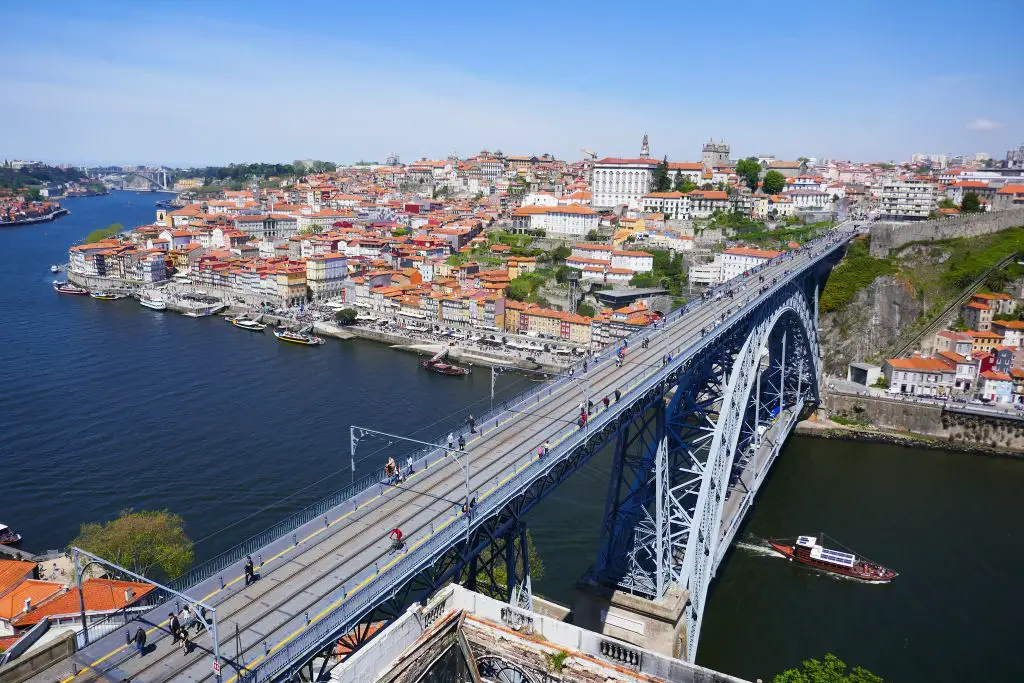
20. Stonehenge, Avebury and Associated Sites, England
Located in the south of England, Stonehenge is possibly the most famous prehistoric monument in the world. Visiting for yourself gives you the chance to find out why. The henge is set in beautiful countryside which serves to highlight the specialness of the place. It began as just a circular bank of earth. It’s thought this was first constructed in about 3100 BC.
The stones were added in around 2300 BC. Over time more stones were added, and the arrangement was adjusted. It was finished by around 1600 BC and has stood since. No one knows why it was built. The stones do, however, ‘sing’ and were brought from as far as 200 miles away.
Today, Stonehenge is one of the most visited places in England and one fo the most beautiful UNESCO sites in Europe!
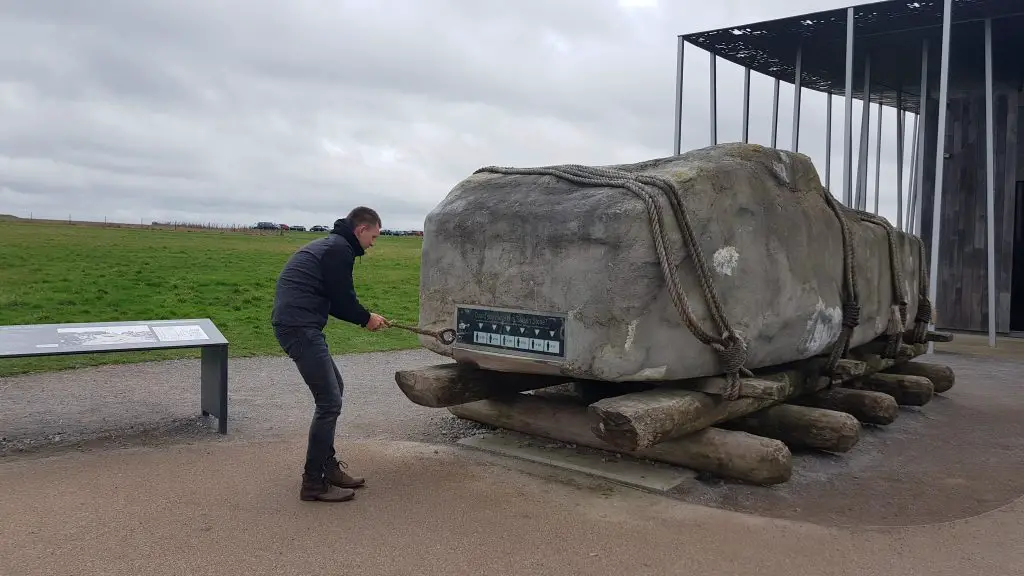
21. Skellig Michael, Ireland
This island has a distinctive twin-peaked shaped that has drawn the faithful since the 6th century. Visiting the island really is something of a pilgrimage as the usually rough weather conditions mean it is only possible to visit during the summer months. It is one of the best places to see while on a road trip in the Ring of Kerry!
On the island, you will find an ancient monastery. The monastery lies on the sides of a valley known as Christ’s Saddle. Because of the remote nature of the place, it has remained uninhabited for the last 1000 years. This has allowed nature to flourish. You will find colonies of gannets, puffins, and seals. Its natural beauty is of course what drew the crew of Star Wars to film in this remote spot.
With its beautiful landscape, Skellig Michael is probably one of the most famous natural wonders of Europe and a top UNESCO site.
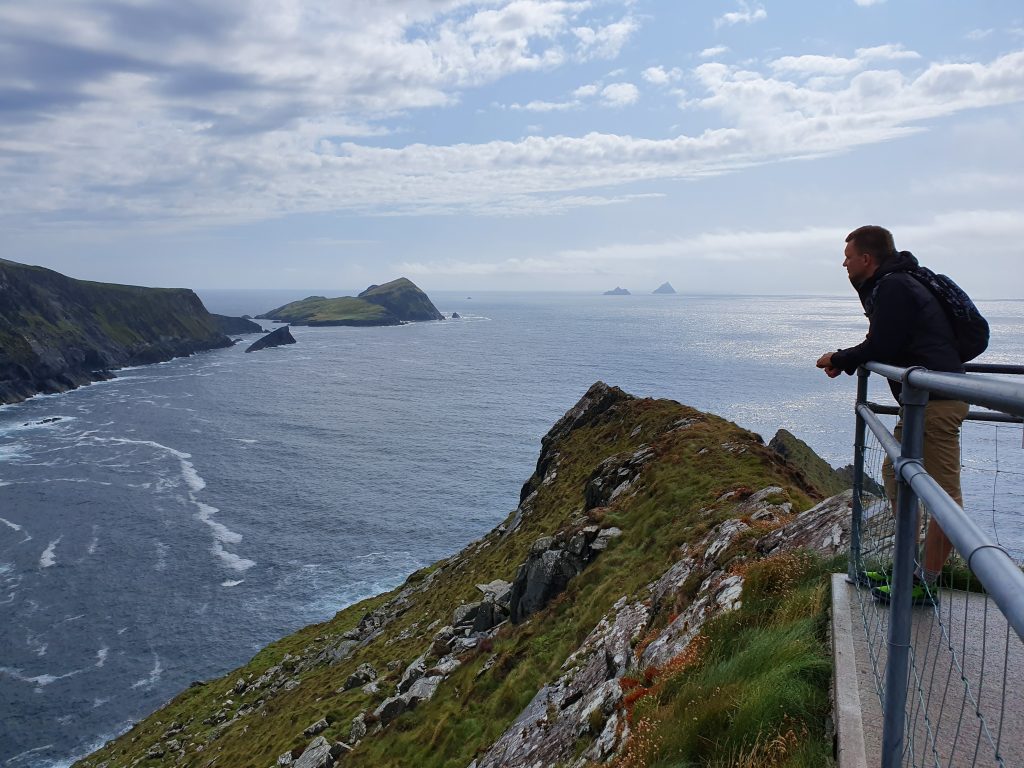
22. Historic Centre (Old Town) of Tallinn, Estonia
Recommended by Becki from meetmeindepartures.com
One of my favourite UNESCO listed historical centres is the Estonian capital of Tallinn. It’s a quintessential medieval city, rich in history (some of it pretty harrowing!) with pretty cobbled alleyways and courtyards to spend hours getting lost in.
Tallinn achieved its UNESCO Heritage status in 1997, shortly after the country gained its independence from the Soviet rule. If you wander around the city, you will find loads of relics left from the Soviet times, in particular a beautiful looking Art Nouveau building in the historical centre, which was temporarily a prison! You can find the KGB Prison & Headquarters right in the heart of Old Town Tallinn at Pagari 1.
I’ve visited all three of the Baltic Capitals, Tallinn is by far the most beautiful city out of the three.
There are so many things to see in Tallinn on a short break. I highly recommend walking around the walls and going up the towers, visiting the gigantically rotund Kiek in de Kok as well as going underground at the super eerie Bastion passages. Don’t forget St Katherine’s passage, one of the most photogenic spots in Tallinn.
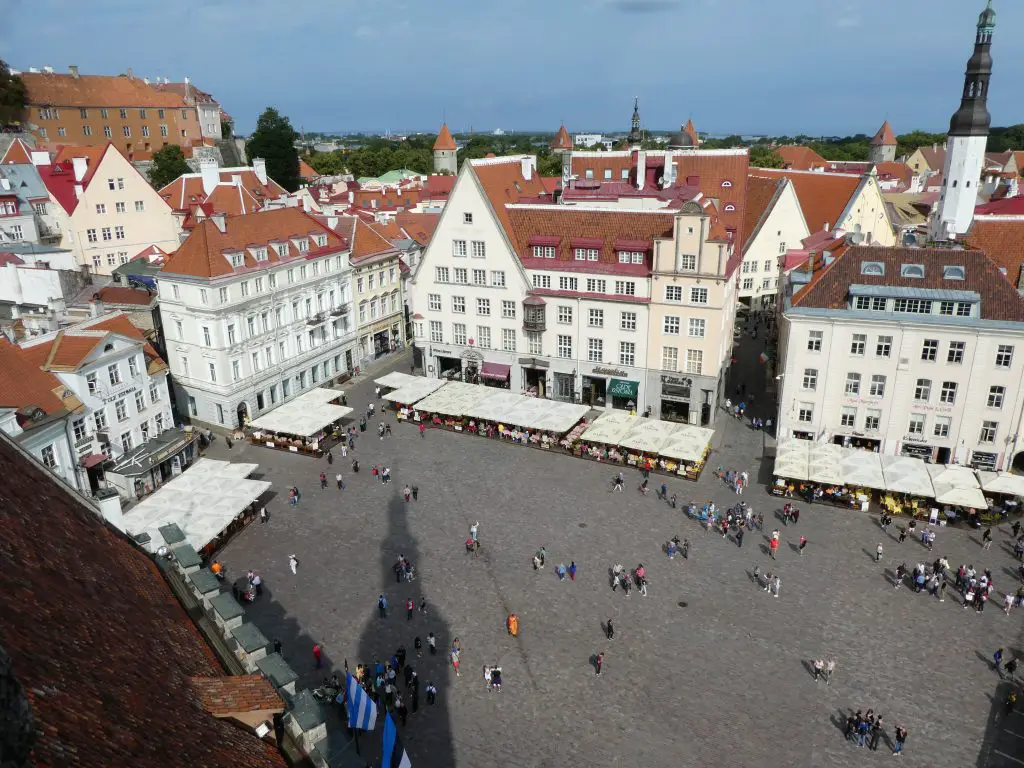
23. La Sagrada Familia, Spain
There are not many buildings that you should visit before they are finished. But, the basilica has been more than 150 years in the making, and it is still unfinished. Even in its semi-completed state, it is a work of beauty and majesty. Few buildings really show the testament of faith and devotion in the way this one does.
The project began in 1882. The original plan was to build a classic neo-gothic cathedral. However, less than a year into the construction Antoni Gaudi took over the project. He had a very different vision, and so the endeavour began. The building of this cathedral has not been without obstacles, but the building, even unfinished, is like nothing you have ever seen before.
If you are in Barcelona, make sure to visit this beautiful UNESCO site as it’s one of the top landmarks in Spain!
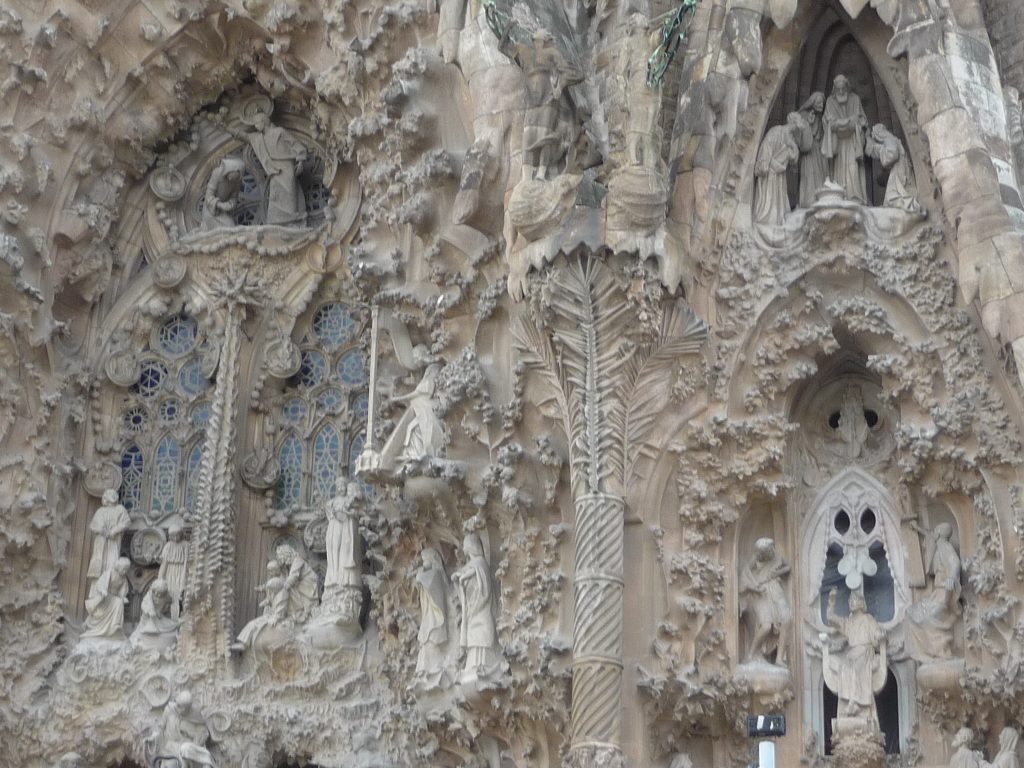
24. Holy Trinity Column in Olomouc, Czech Republic
Recommended by Veronika from travelgeekery.com
The Holy Trinity Column in Olomouc, Czech Republic, was inscribed on the UNESCO World Heritage List in 2020.
Built between 1716 and 1754, the column was erected by locals from Olomouc to celebrate the end of a 2-year long plague which swept through Central Europe in the 18th century.
The Holy Trinity Column belongs to one of the largest in the world. It’s so big there’s even a small chapel on the lower part. The column also has the highest number of Baroque statues on one structure in the whole of Central Europe. It features 18 sculptures of saints, 12 light-bearer figures and 12 relief busts of the apostles. It’s then topped off with a sculptural group of the Assumption of the Virgin Mary and the main Holy Trinity sculpture made of gold-like metal.
The whole Old Town of Olomouc, comprised of the Lower Square and the Upper Square, where the Holy Trinity Column stands, is beautiful and well worth strolling around.
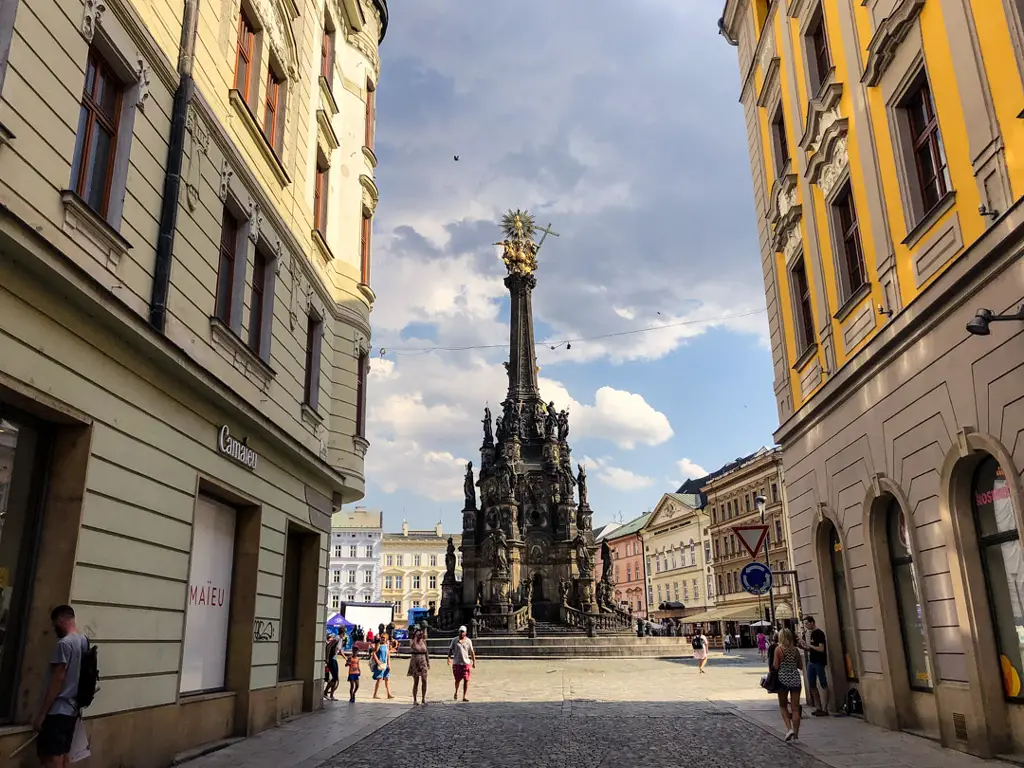
25. The Trulli of Alberobello, Italy
Trulli are buildings that are constructed using prehistoric building techniques. The oldest, still standing, are the ones found in Alberobello – a pretty town in Italy’s Apulia region.
They date back to the 14th century. These fantastic buildings are made without mortar. This made them easy to put up and take down. This was to avoid paying taxes.
The buildings are constructed using limestone, which gives them both their distinctive white render as well as their conical roofs. Despite their ancient origin, most are still occupied today. The design is surprisingly ingenious. To feel the best impact of these houses you should visit the Monti district where there are over 100 of these houses nestled together into the landscape.
With its unique architecture, the Trulli of Alberobello is one of the most visited places in Italy and also a must-see UNESCO site in Europe.
26. Historic Centre of Saint Petersburg, Russia
Recommended by Ellis from backpackadventures.org
The historic centre of St Petersburg is among the top UNESCO places in Europe. The city was founded by tsar Peter the Great at the start of the 18th century to become the new capital of Russia.
Soon the Romanov tsars and Russia’s elite invested in making St Petersburg a noteworthy city with luxurious palaces, elegant bridges, colossal cathedrals and classical buildings.
The result is a beautiful city that feels more European than Russian. The canals were inspired by Amsterdam while the colourful baroque and art nouveau buildings were made with help from famous Italian architects.
It’s clear that there was lots of wealth going around until the Russian revolution put a stop to it. The Soviets left the historic centre of St Petersburg as it is though.
When walking through the historic centre of St Petersburg it is easy to get a sense of what it was like to be a wealthy Russian merchant in the 18th and 19th century.
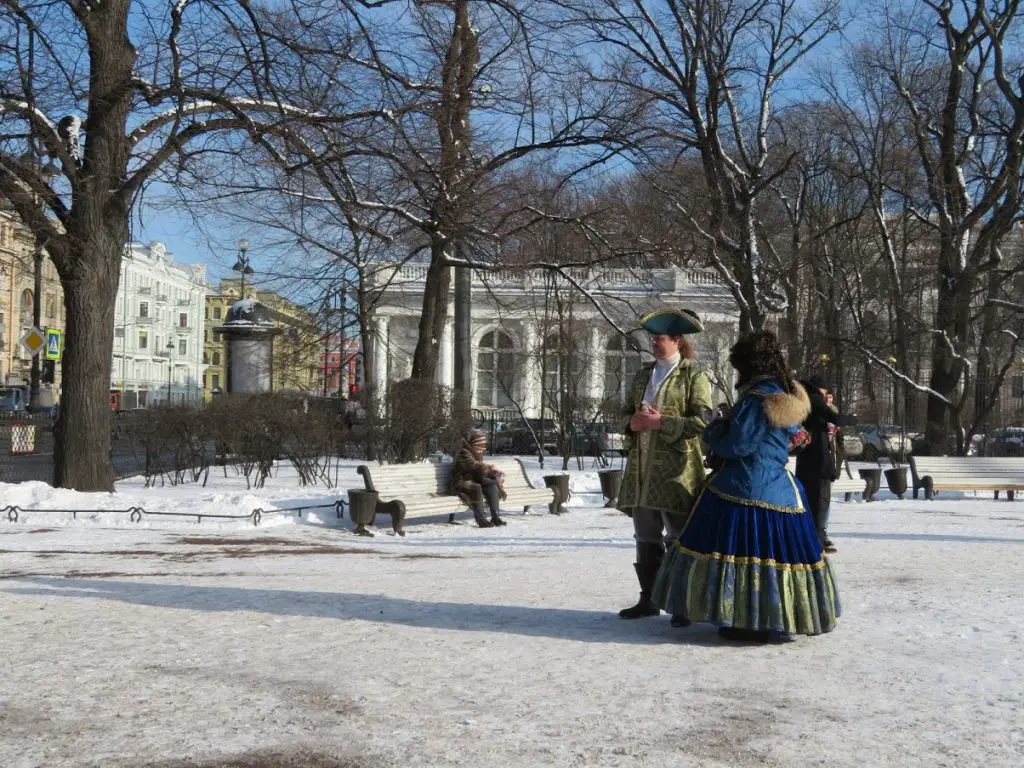
27. Historic Centre of the City of Salzburg, Austria
Salzburg has long been a creative centre of Europe. The city has a striking baroque style to it. This is thanks to the work of Vincenzo Scamozzi and Santini Solari. Its position between northern and southern Europe has made it a lodestone for artists over the ages.
Gothic art came to prominence in the city, as did Mozart. If you can time a visit near Christmas, you might be able to catch the annual ‘Krampus Run’. It’s a local tradition that you will not regret experiencing.
Salzburg is not only a stunning UNESCO site in Europe, but it is also one of the most popular weekend getaways in Europe and a great base to explore the Austrian Alps.
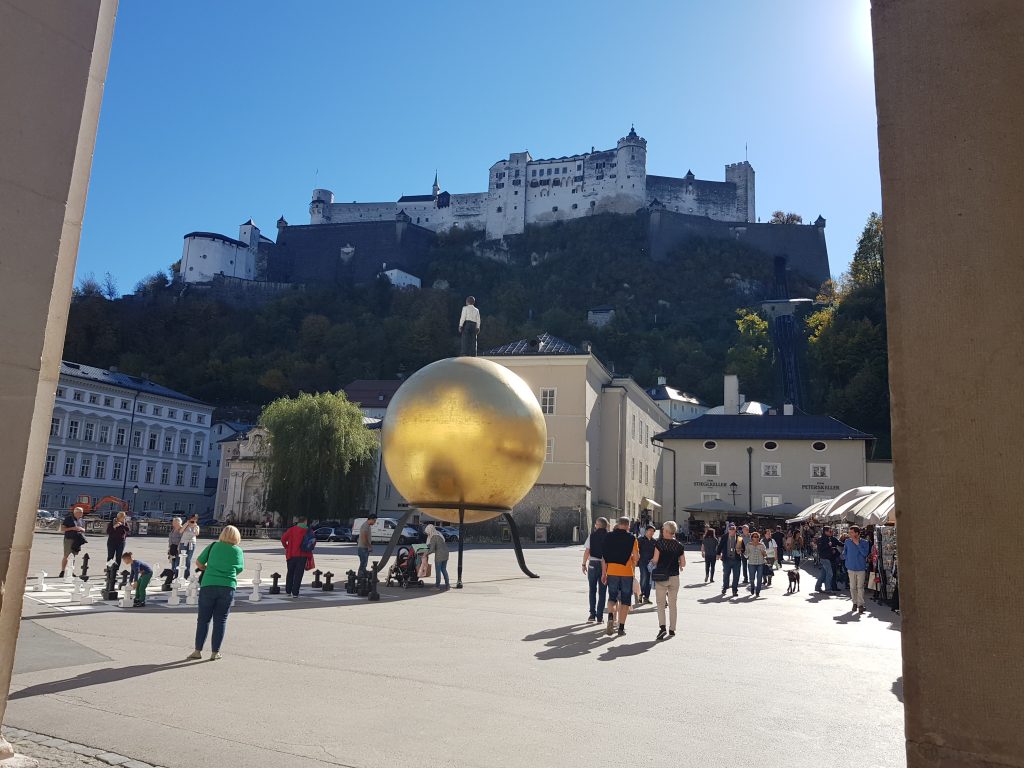
28. Meteora Monasteries, Greece
Recommended by Liliane from mytorontomyworld.com
Located in Kalambaka, approximately 4 hours north from Athens, you’ll find the Meteora Monasteries. The monasteries have been on the UNESCO World Heritage List since 1988. The word meteora means “suspended in air” which pretty much describes these stunning buildings. The monasteries are built into the cliffs in the area and are such an architectural feat that they’re hard to believe.
In the 14th century, 20 monasteries were originally built of which 6 remain today. The 6 that are still standing are Holy Trinity, St. Stephen, Varlaam, St. Nicholas Anapausas, Rousanou and Great Meteoron. Each monastery has its own opening hours and entrance fees so if you prefer visiting a specific one then make sure to look up the hours ahead of time. Do note that the admission fees need to be paid in cash.
These are working monasteries and as such there are rules to visiting. Both males and females need to be dressed appropriately. If you’re wearing shorts or a dress/skirt that falls above the knee then you will be asked to borrow pants/a longer skirt from the monastery to cover your legs.
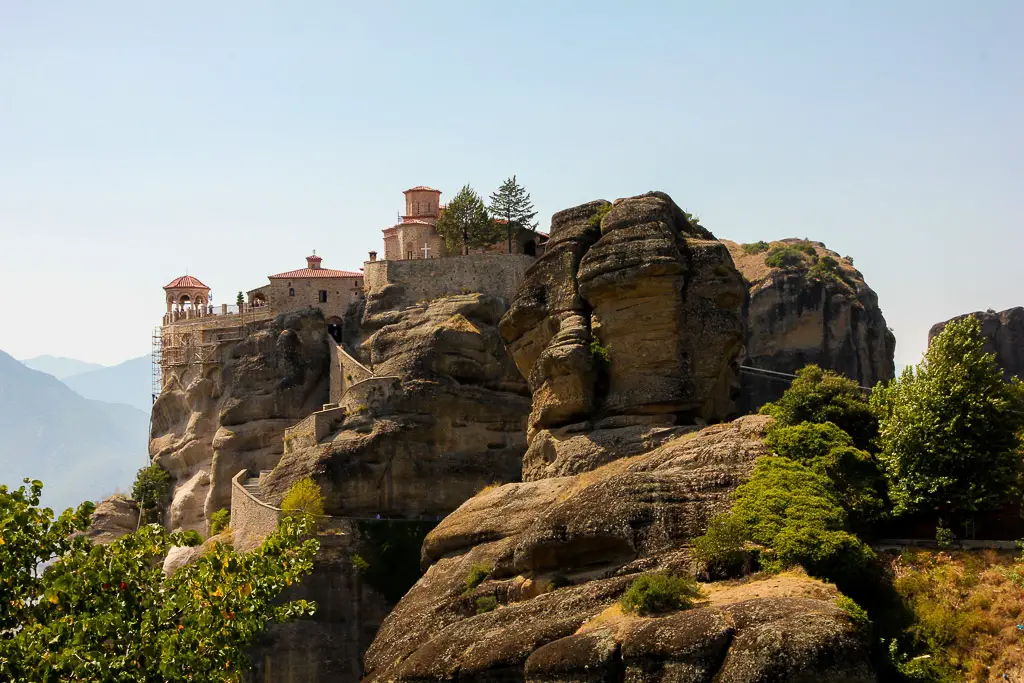
29. Piazza del Duomo in Pisa, Italy
The Leaning Tower of Pisa might be the best known of the monuments in the Piazza, but it is by no means the only reason to visit. There are actually four medieval masterpieces to experience. The cathedral, the baptistry the campanile (tower) and the cemetery all had lasting impacts on Italian art.
It is even believed that Galileo found inspiration for his mathematical proofs inside the cathedral. The Piazza is also known as the Piazza Dei Miracoli or the Square of Miracles. This is because it is the religious centre of Pisa.
Pisa is so beautiful that it’s considered one of the most popular places to visit in Italy, and a top European UNESCO sites!
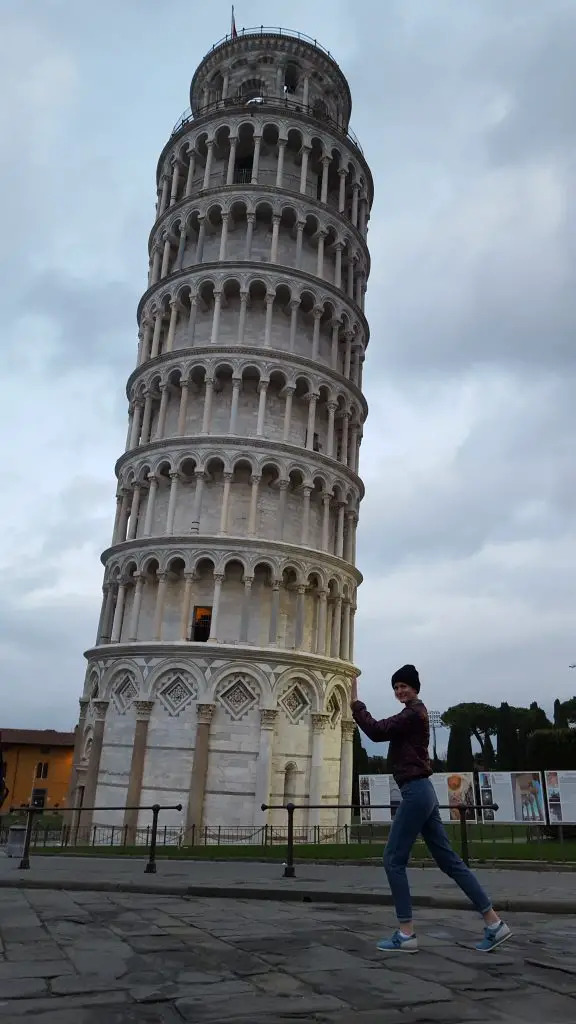
30. Kronborg Castle, Denmark
Recommended by Derek and Mike from everythingcopenhagen.com
One of Europe’s most interesting UNESCO sites lies just 40 minutes north of Copenhagen in the town of Helsingør. That’s where you’ll find Kronborg Castle, a strategic Danish fortress that guarded the entrance of the Baltic Sea.
During the Danish Golden Age, control of the Øresund, the strait connecting the North Sea and the Baltic Sea, was maintained by twin fortresses on each side. In those days, Denmark controlled the southern portion of modern-day Sweden and collected a toll on all shipments in and out of the Baltic.
The castle has other famous roots – from Shakespeare’s tragedy, Hamlet. The famous line “there’s something rotten in Denmark,” was from the play set in Kronborg Castle. It’s recorded that English acting troupes from London visited the castle and performed for the Danish court. Shakespeare himself would have been aware of the castle and potentially visited with a troupe in his early career.
Today, visitors from all over the world visit Kronborg Castle and in the summer months, they can enjoy Shakespearean actors performing scenes from the famous play. The other highlights included guided tours of the royal apartments and chapel. The dungeon is open for a self-guided tour as is the gun tower which offers gorgeous views of the town, castle ground and across the strait to Sweden.
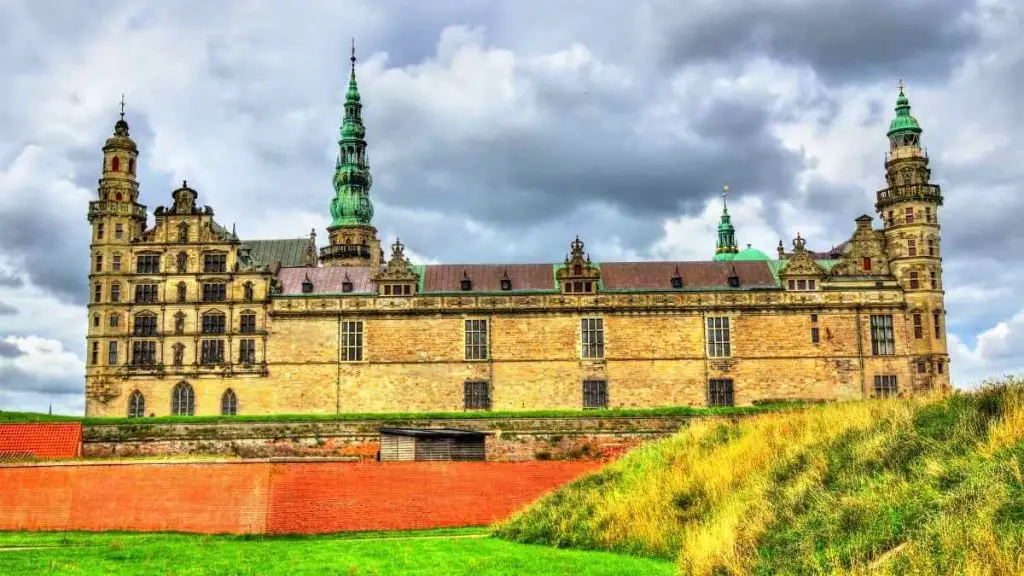
31. Costiera Amalfitana, Italy
The beauty of the Amalfi coast has drawn people since the Middle Ages. This means that while you enjoy the undeniably beautiful coastal landscape, you can also find some architectural and artistic gems. The many towns that dot the coast are colourful and surprising.
Many small buildings have been carefully built on the steep cliffs. In these buildings, you can find some of the best food and wine in the whole of Italy.
The Costiera Amalfitana is one of the most beautiful road trips in Europe and a must-visit UNESCO site!
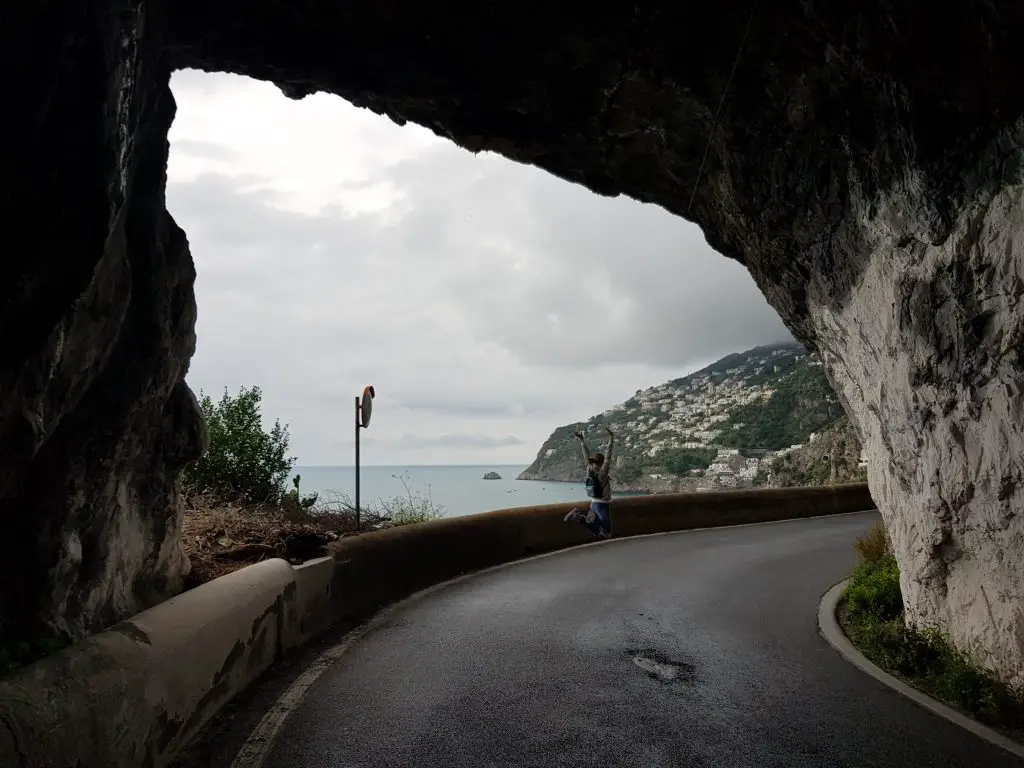
32. Swiss Alps Jungfrau-Aletsch, Switzerland
Recommended by Maureen from somanyplacessolittletime.com
Picture if you can, a range of stunning snow-capped mountain peaks and a dazzling glacier that stretches and winds its way for 23 kilometres – the longest glacier in the Alps. Welcome to the UNESCO World Heritage-listed “Swiss Alps Jungfrau-Aletsch” area, located in the southwestern part of Switzerland.
It was inscribed on the World Heritage list in 2001 and includes 18 mountains with nine summits over 4,000 meters high, six glaciers on the north side, four glaciers on the south side, and two lakes. Jungfrau refers to the mountain and Aletsch refers to the largest glacier in the Alps at 23 km long, one and a half km wide (on average) and 900 m thick at its densest part.
The best views of the Aletsch glacier are from the Jungfraujoch which is accessible by historic mountain trains from Kleine Scheidegg. Great views of the three stunning peaks of the Eiger, Monch, and Jungfrau are also seen from the Birg summit above very picturesque Murren village. And while you’re at the summit don’t miss taking an adrenalin-pumping stroll on the Thrill Walk which is a 200-meter steel and plexiglass cliff walkway, that starts nearly 3000 meters high and has been built to curl and wind around a near-vertical rock face of the mountain.
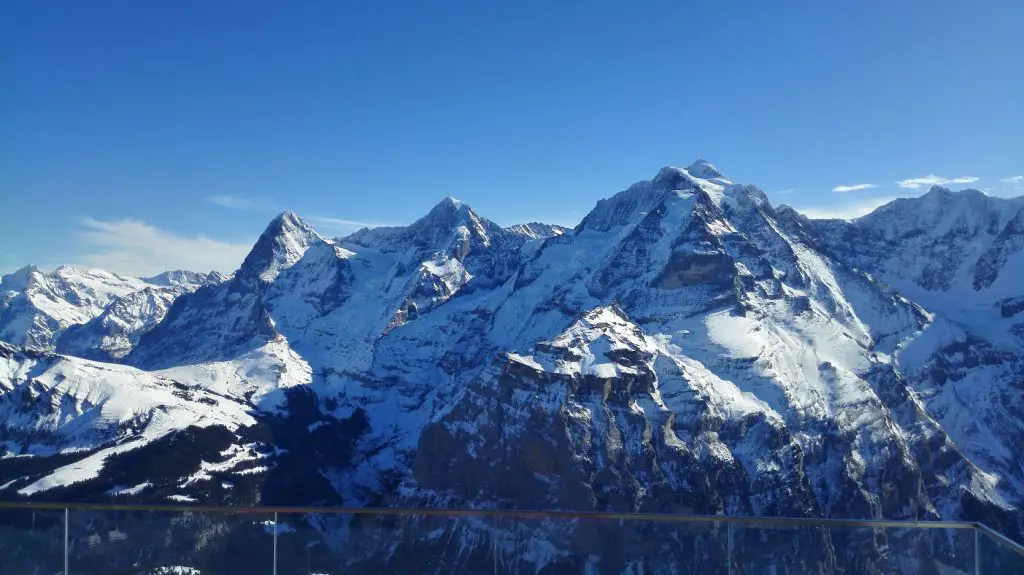
33. Jurassic Coast, England
The Jurrasic Coast is 95 miles of British Coastline. It is located in southern England and runs from Exmouth, in Devon, to Old Harry Rocks, in Dorset. This stretch of the Jurassic Coast is the only Natural UNESCO site in England.
It was chosen because it is home to over 185 million years of history, in the form of rock formations, fossils and coastal shaping. There are a great many walks you can take which give you stunning views of the at times unbelievable rock formations, including arches, pinnacles and gravity-defying rock stacks, all formed naturally.
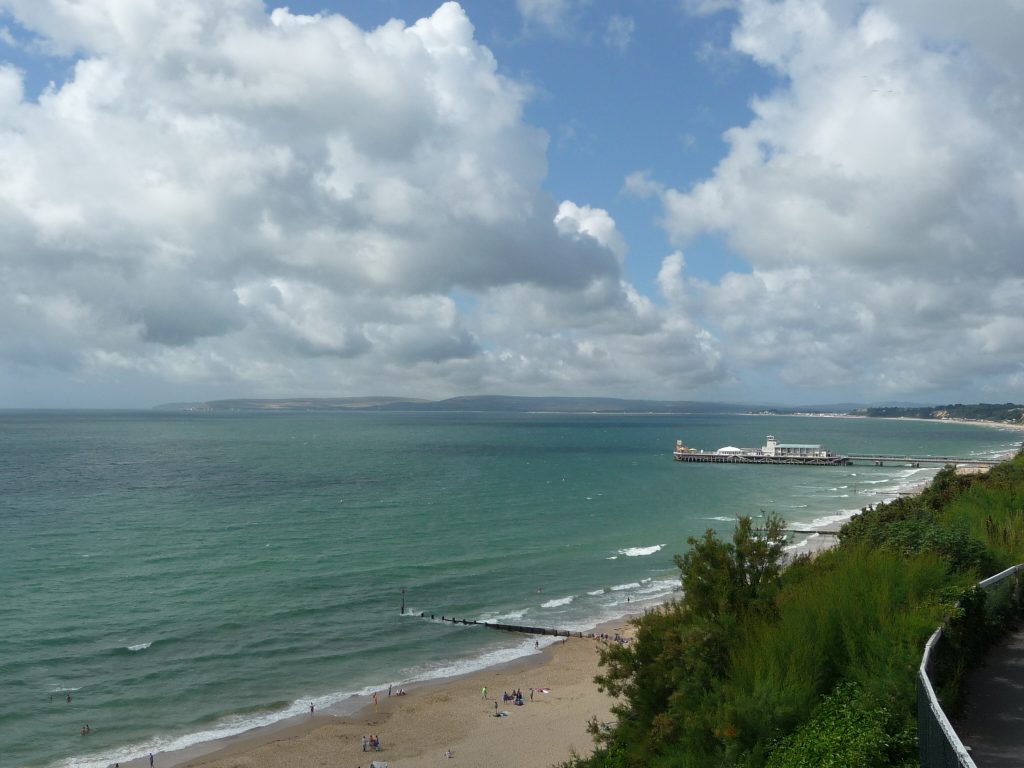
34. Durmitor National Park, Montenegro
Recommended by Cass from cassiethehag.com
Durmitor National Park, in the heart of Montenegro, is one of the most photogenic places I’ve visited in Europe. From towering peaks to the biggest canyon in Europe, it is the place to visit for hikers and nature lovers. It is easily accessible by road and there are various accommodation options in Zabjlak.
There is a lot to do in Durmitor National Park. In Winter, it is a paradise for skiers and snowboarders; Durmitor is a massif of 48 towering peaks with the highest mountain being Bobotuv Kok, at 2523m tall. In the shoulder seasons, it is perfect for hikers and road-trippers through The Balkans. Summer is a wonderful time to see the Tara Canyon, which has a depth of up to 1300m, as you can take a raft down the river and enjoy the sparkling blue water as the rocky valleys tower overhead. Over the canyon runs both Durdevica Tara Bridge and also a 1050m extreme zipline, which goes up to 100km an hour.
Durmitor is also home to 17 glacier lakes! Black Lake and Piva Lake are two of the most popular in the region.
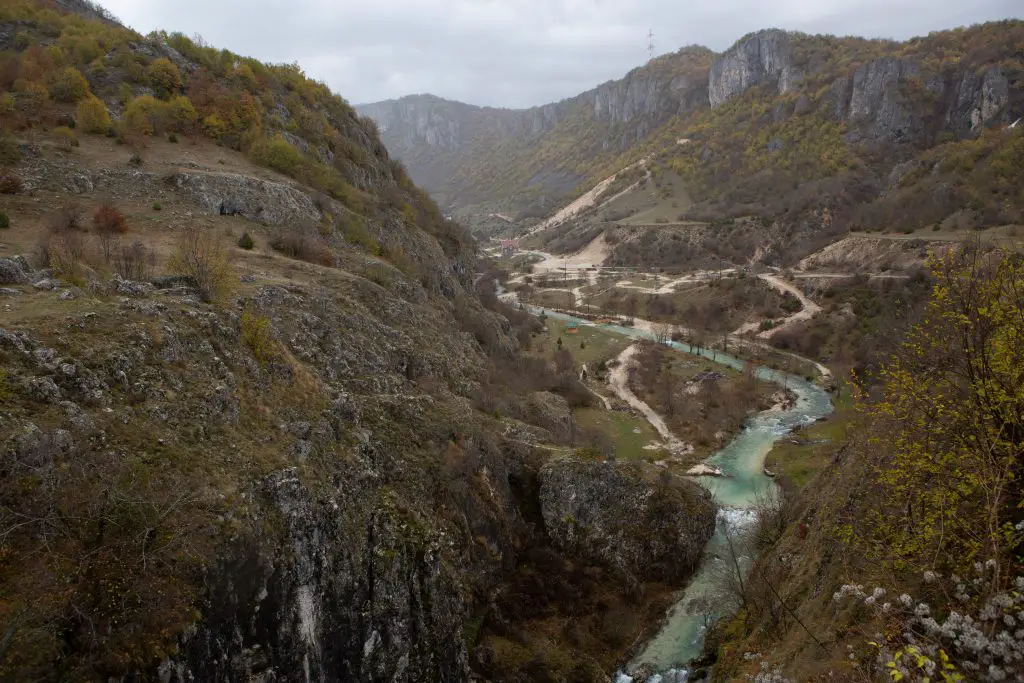
35. Florence, Italy
The city of Florence is the most densely inhabited city in the Tuscany region. It was initially a centre for trade in medieval Europe. Because Florence has been home to so many famous artists over the years, it is now home to around one-third of all the world’s art treasures. Some of the most famous European churches and bridges can be found in Florence.
These days it is considered a world centre for fashion. If you want to combine a love of fashion and history, you could visit the city’s shoe museum which houses thousands of pairs of shoes. It’s a fascinating place to explore.
Apart of being one of the most beautiful places in Italy it is alos a must-visit UNESCO site.
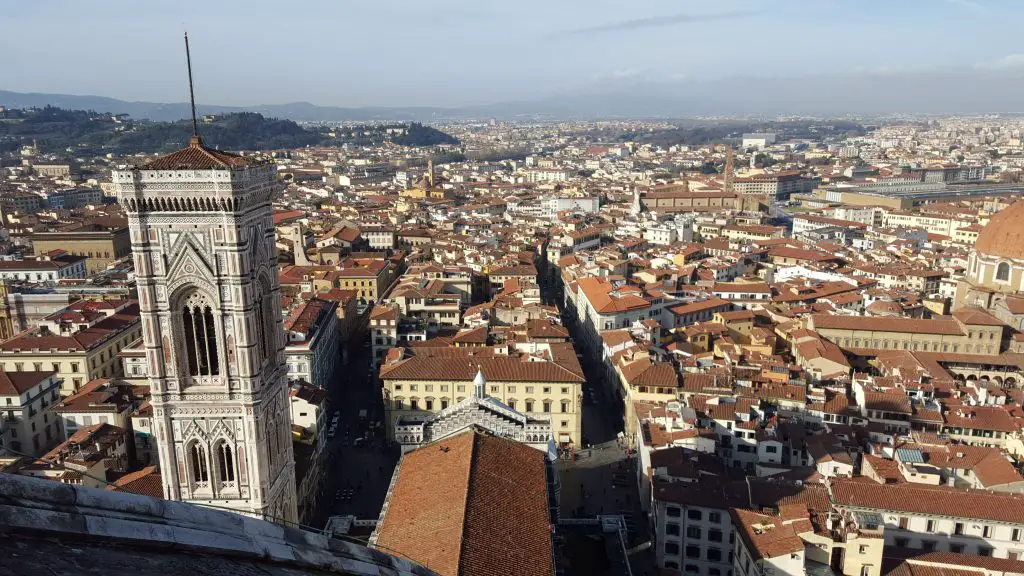
36. Historic Centre of Prague, Czech Republic
Recommended by Alyse from theinvisibletourist.com
If you’re planning a Prague itinerary, you’ll want to spend at least four days exploring this gorgeous UNESCO listed city in central Europe. At the risk of sounding clichéd, a visit to the Historical Centre of Prague can be likened to transporting yourself into the pages of a fairytale storybook.
Straddling both sides of the Vltava River, Prague’s medieval city centre is not just a pretty face. While the narrow cobbled streets are dominated by captivating architecture from the 11th – 18th centuries, Prague was once a leading cultural centre of Europe. Boasting one of Europe’s earliest universities (1348) and with ties to historical figures in arts and sciences such as Galileo, Kepler, Mozart and even Einstein, Prague will intrigue with fascinating history from centuries past.
No visit to Prague would be complete without enjoying some of the city’s top attractions such as the Astronomical Clock, Old Town Square, Charles Bridge, Prague Castle, Wenceslas Square and the Powder Tower. Make sure to avoid the crowds by visiting untouched neighbourhoods such as Novy Svet on the city’s fringe!
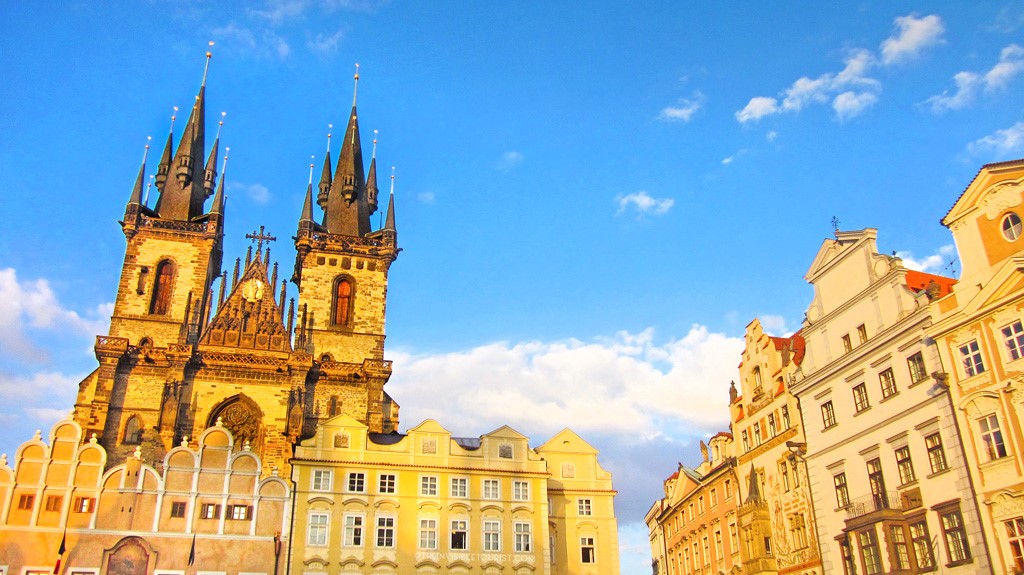
37. Paris, Banks of the Seine, France
Recommended by Jessica from uprootedtraveler.com
The city of Paris was built on the banks of the Seine, with most of the development, as the city is now known, occurring between the 16th and 20th century.
A simple stroll along the Seine, whose banks were designated as a UNESCO World Heritage Site in 1991, can reveal the City of Love’s history and culture during this time frame, featuring the most iconic sights of the city, like the Louvre to the Eiffel Tower. So many architectural marvels were built along the banks, including Middle Age masterpieces such as the Sainte Chapelle and Notre Dame and examples of French classicism such as the Ecole Militaire.
Beyond the amazing architecture, people have flocked to the river’s banks for centuries, as a social gathering point, economic hub, and defensive centre. Now, the river, by day, is buzzing with visitors on tour boats, delicately gliding under centuries-old bridges and by night, draws thousands of locals and tourists to drink wine, sing songs, and just drink in the gorgeous sights of the city.
When you find yourself in Paris, a stroll along the banks of the Seine is an absolute must to understand the past, present, and future of this famously charming city.
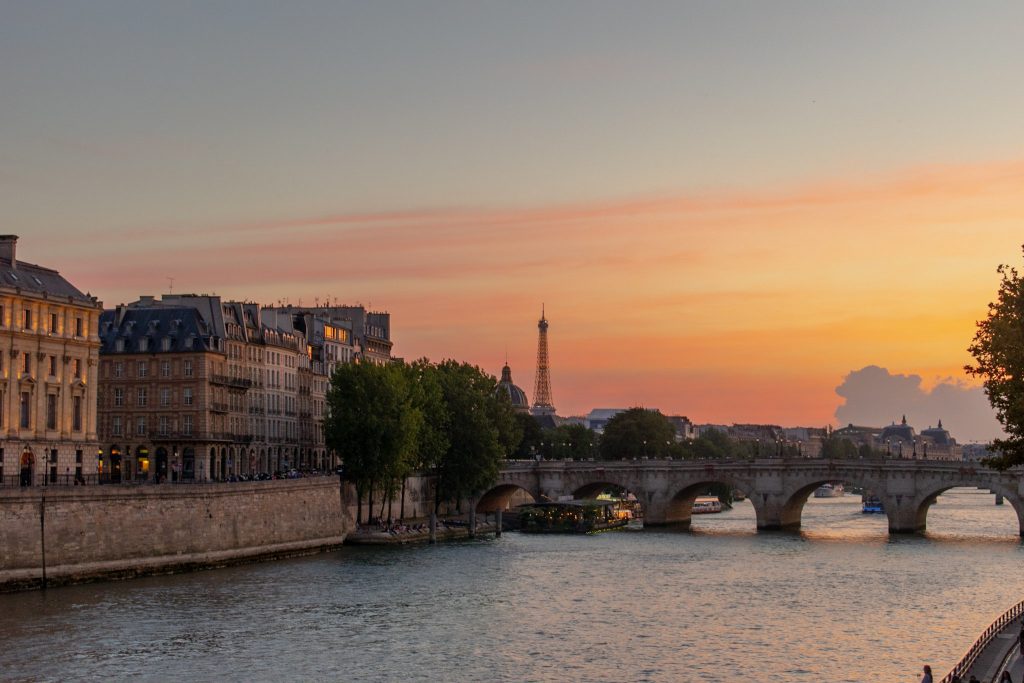
38. Plitvice Lakes National Park, Croatia
For any traveller with a love for the natural world, the Plitvice Lakes National Park is an absolute must. The deep woodland is home to deer, wolves, and bears, as well as several rare species of birds. In amongst the trees, there are 16 lakes connected together by over 90 waterfalls.
As you explore the lakes, you will find that their colours range from bright crystal blues to dark emerald greens.
Would you add this stunning park to your list of the most beautiful UNESCO sites in Europe?
39. West Norwegian Fjords – Geirangerfjord and Nærøyfjord, Norway
Recommended by Helen from helenonherholidays.com
Two of Norway’s fjords appear on the UNESCO list of World Heritage Sites. The Geirangerfjord and Nærøyfjord were inscribed as a joint listing in 2005.
While western Norway has other fjords, these two are particularly special for their dramatic beauty and their geological interest. They’re both exceptionally deep (up to 500 metres) and lined by steep mountainsides which in places are 1,400m high. It’s impossible not to feel very small when you’re sailing through one of these magnificent fjords.
The Nærøyfjord starts at Gudvangen and extends for 17km until it meets the Aurlandsfjord. Its name sounds like “narrow” (although it actually comes from the name of the Norse god of the seafarer), and it is only 250 metres wide at its narrowest point.
120km north of the Nærøyfjord, the Geirangerfjord is characterised by sapphire blue water, lush green mountainsides and the many beautiful waterfalls that cascade down its sides.
Both of Norway’s UNESCO-listed fjords are easy to visit. You can take a kayak tour to experience the beauty of the fjords under your own steam, or travel by ferry.
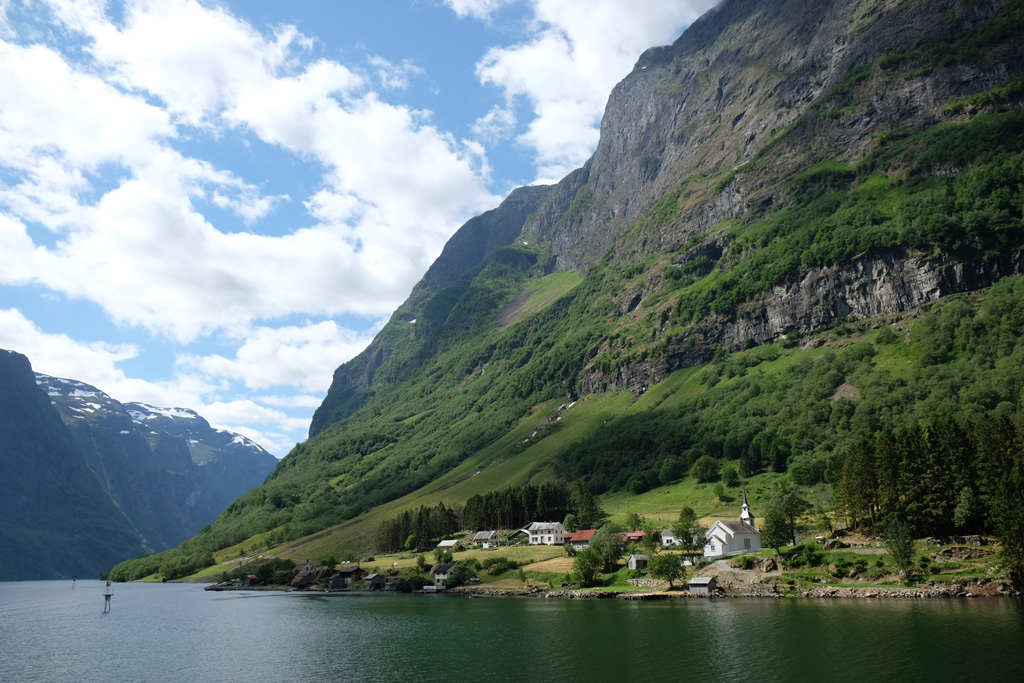
40. Tower of Belém in Lisbon, Portugal
Recommended by Marco from travel-boo.com
If you are planning a trip to gorgeous Lisbon, then a visit to the riverside neighbourhood of Belém is an absolute must. It’s here that you will find two of the cities most notable UNESCO sites, the Belém Tower and the Jerónimos Monastery.
Both the Torre de Belém (Belém Tower) as well as the Mosteiro dos Jerónimos (Jerónimos Monastery) are two incredible examples of the Manueline architectural style that can be found all across Portugal in many notable churches and buildings.
The Torre de Belém fort that juts out into the Tagus river, dating back to the 1500s, is probably one of Lisbon’s most iconic shots and for this reason, it’s not uncommon to find long queues of eager tourists wanting to enter the fort. At present, the entrance fee is €6.00, but in my honest opinion, the fort is best admired from the outside as there’s not much to see and explore as far as interiors go.
A short 15-minute stroll the Belém Tower is the area’s showstopper, the stunning Jerónimos Monastery, dating back to 1495, which in my opinion is absolutely worth the visit for the incredible architecture and history. The adjacent church, the Santa Maria church, which is free to enter, is one of the most beautiful I’ve visited and a top favourite in Lisbon itself.
Whilst discovering these quintessential Lisbon UNESCO sites, you may also want to visit a few of the other attractions in and around the area too, including the Pasteis de Belem bakery to try the famed and delicious Pastel de Nata egg-yolk custard tartlets, a true taste of Portugal!

41. Cinque Terre, Italy
The area of Cinque Terre is diverse. It includes five villages, the coastline and the surrounding hillsides. Entering the area is a real adventure. The best ways are by boat, train or foot. It’s tough to get in via car as the only routes are narrow and treacherous. It’s a perfect destination for a holiday in Italy.
The isolated nature of the area has led to the villages developing in their unique way. The buildings are all bright and colourful. They crowd together as space is scarce amongst the steep hills. Even though a good number of tourists travel here, the villages have maintained their authentic charm.
It’s also one of the most beautiful European UNESCO sites that deserves you to see it!
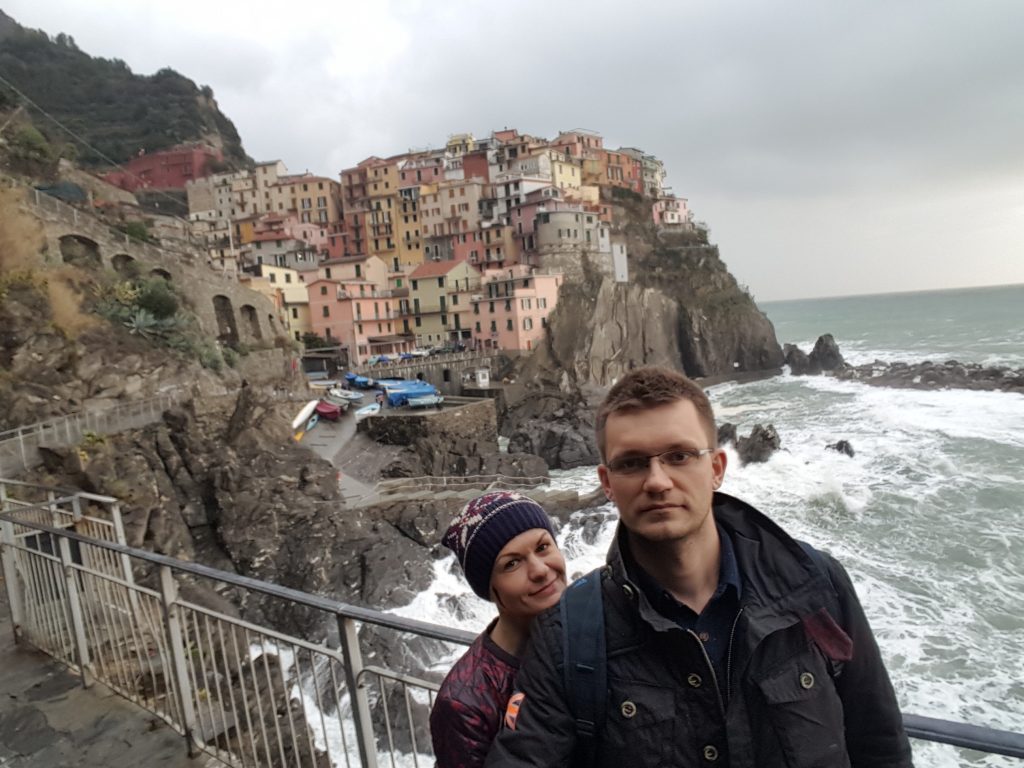
Love travelling in Europe?
Read our other articles related to this stunning continent:
What UNESCO sites in Europe are next on your bucket list?
Hopefully, this list has inspired you to add some extra stops on your next big adventure. Stopping at any of these places will leave you with memories you’ll treasure forever.
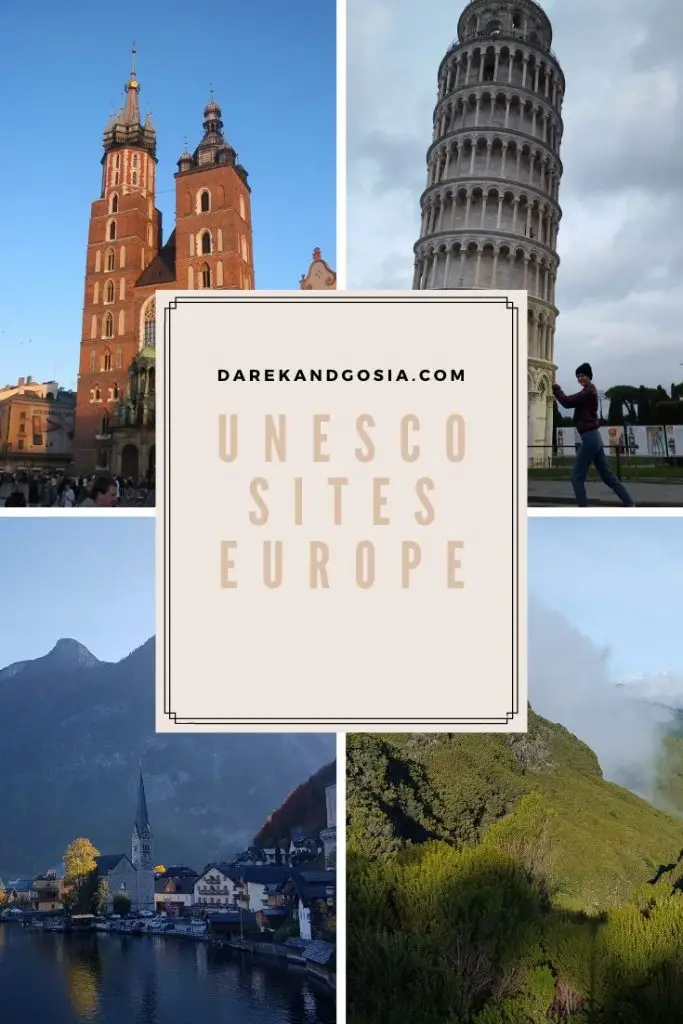
Articles you may like:
